I am excited to share that I’ve finally managed to go and write about my most incredible journey yet—Antarctica, my seventh and final continent! This trip was a bit of a sudden plan, but I decided to ring in the New Year 2024 in the icy wonderland, and let me tell you, it was an experience like no other and definitely a memory I will cherish forever. If you are unsure about how to plan a trip to Antarctica read till the end.
Antarctica is a place of beauty, wildlife, and adventure. It’s not just a trip; it’s a journey into the heart of nature’s most pristine and untamed wilderness. You’ve probably read people saying similar things about it before but I can confirm, it is all true specially after the Drake passage, because it is jaw dropping! Whether you’re a seasoned traveler or just looking for a unique escape, Antarctica offers an experience that is truly out of this world.
Antarctica: My 7th Continent Adventure
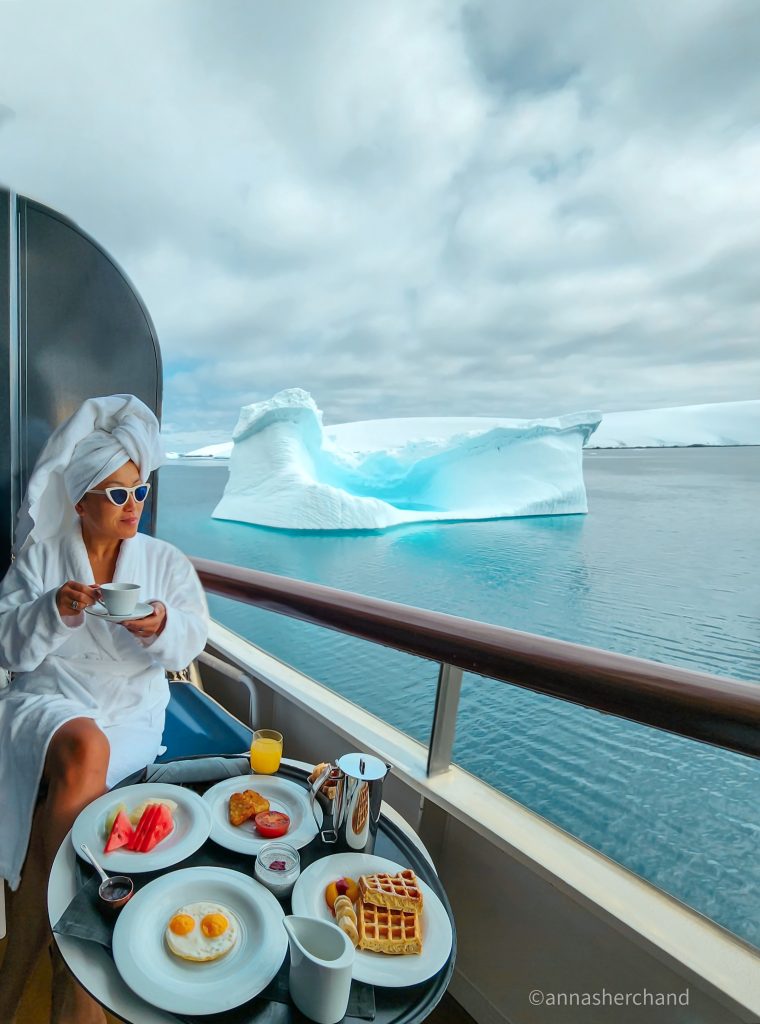
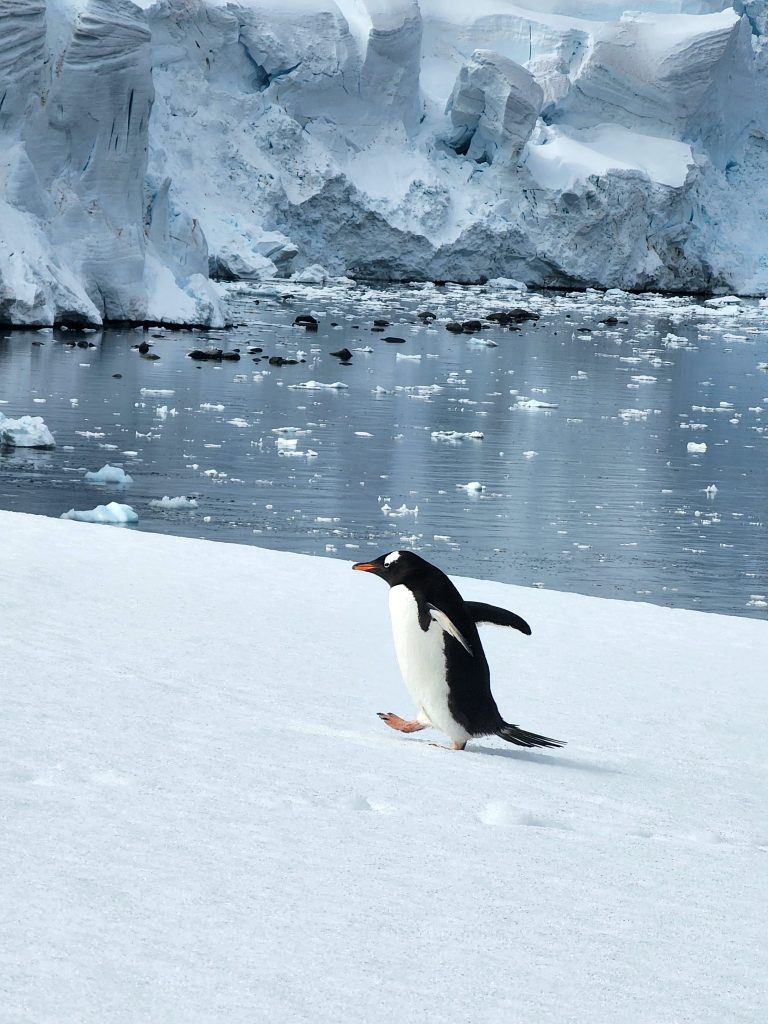

How to plan a trip to Antarctica
Planning a trip to Antarctica can seem overwhelming, but with the right information and a bit of preparation, it’s entirely doable.
The frozen frontier, the ultimate adventure—Antarctica is known for its breathtaking landscapes, towering icebergs, and abundant wildlife. It is a destination like no other and it is not just a single landmass; the region encompasses a variety of fascinating locations that offer unique experiences and unforgettable sights. Among these are the Antarctica Peninsula, South Shetland Islands, South Georgia, and the Falkland Islands. Let’s dive into what makes each of these destinations special.
Antarctica Peninsula
The Antarctica Peninsula is the northernmost part of the mainland and the most accessible region. It’s a dramatic landscape of towering glaciers, jagged peaks, and ice-filled waters. Here, you can:
- Experience Wildlife: Encounter bustling colonies of penguins, playful seals, and majestic whales.
- Explore by Zodiac: Navigate through icy channels and get up close to stunning ice formations.
- Hike on Ice: Trek across the ice and snow to experience the raw beauty of the Antarctic wilderness.
South Shetland Islands
Located just north of the Antarctica Peninsula, the South Shetland Islands are a haven for wildlife and offer a glimpse into the region’s volcanic history. Highlights include:
- Penguin Colonies: Visit large colonies of chinstrap and gentoo penguins.
- Deception Island: Explore this unique volcanic caldera where you can actually set foot inside an active volcano.
- Historic Sites: Discover remnants of early whaling stations and research outposts.
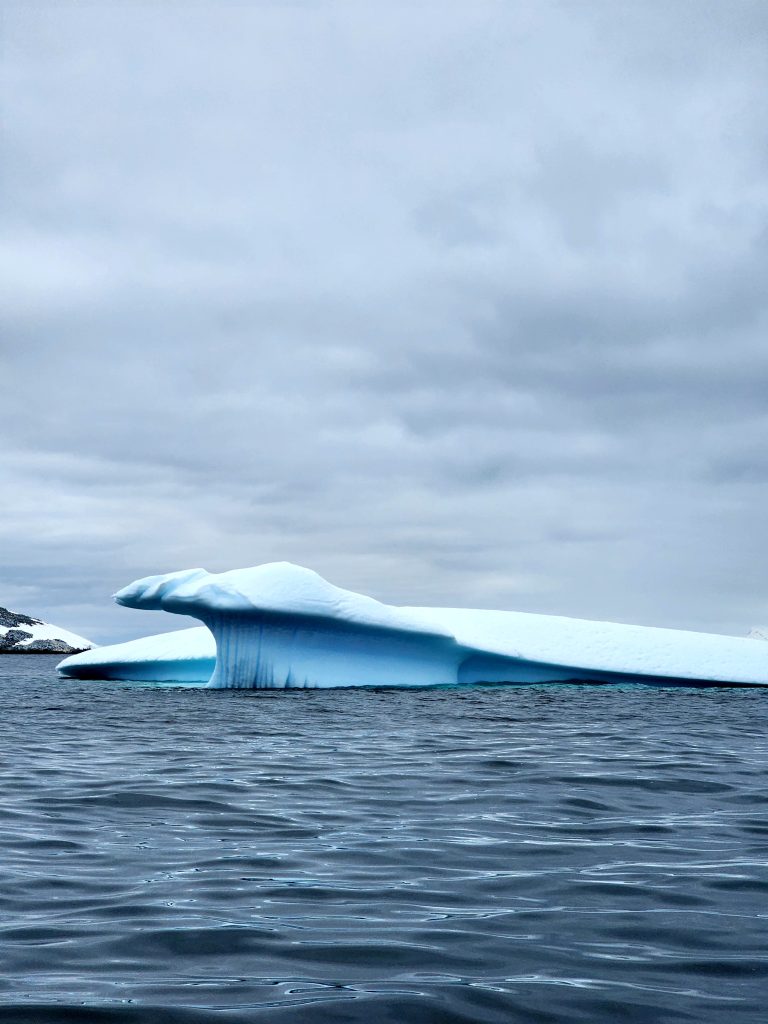
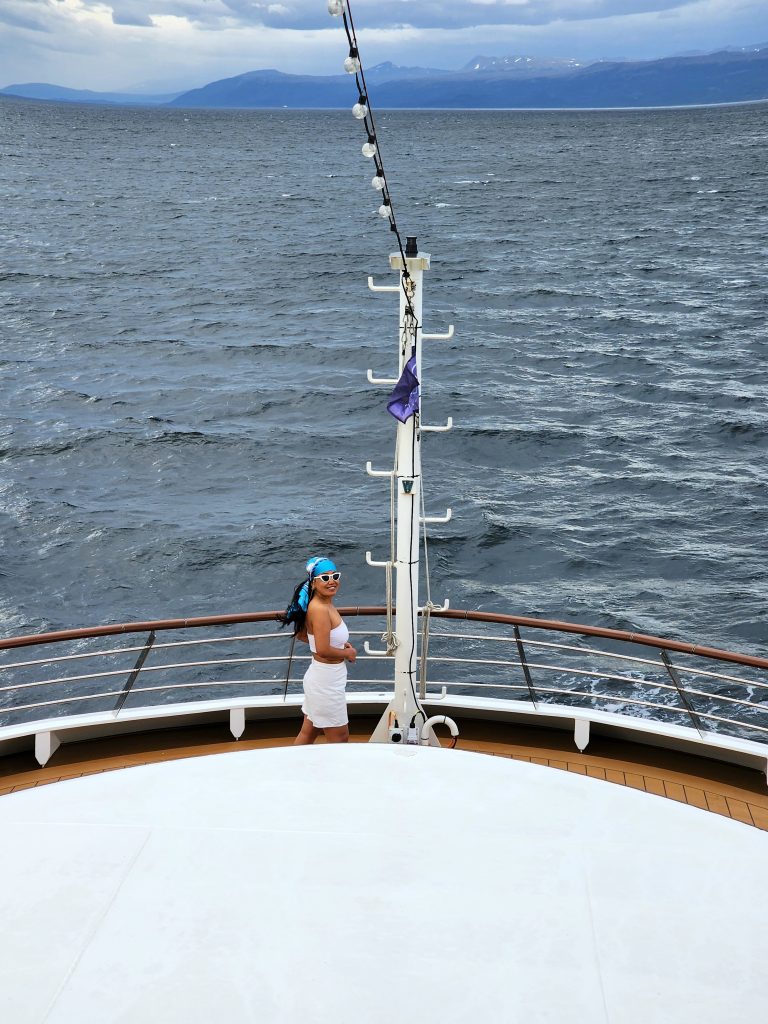

South Georgia
South Georgia is a remote and rugged island known for its staggering concentrations of wildlife and its role in Antarctic exploration history. Key attractions are:
- Wildlife Haven: See hundreds of thousands of king penguins, along with elephant seals and fur seals.
- Historical Significance: Visit the final resting place of famed explorer Sir Ernest Shackleton.
- Scenic Beauty: Marvel at the island’s dramatic landscapes, from snow-covered mountains to lush, tussock-covered hills.
Falkland Islands
The Falkland Islands, located northeast of the Antarctic Peninsula, are a unique blend of wildlife and cultural history. When visiting, you can:
- Birdwatching: Observe a variety of bird species, including albatrosses and rockhopper penguins.
- Cultural Experience: Explore the British-influenced towns and settlements.
- Wildlife Viewing: Spot sea lions, dolphins, and other marine life along the coast.
Antarctica is one continent, but its surrounding regions like the Antarctica Peninsula, South Shetland Islands, South Georgia, and the Falkland Islands offer diverse and extraordinary experiences. Each destination adds a unique flavor to the adventure, ensuring that your journey to the southernmost reaches of the Earth is nothing short of spectacular meaning you can book for expedition ships dedicated to each of this Arctic fun or visit all in 1 go if you have the time and resources.
Plan a trip to Antarctica
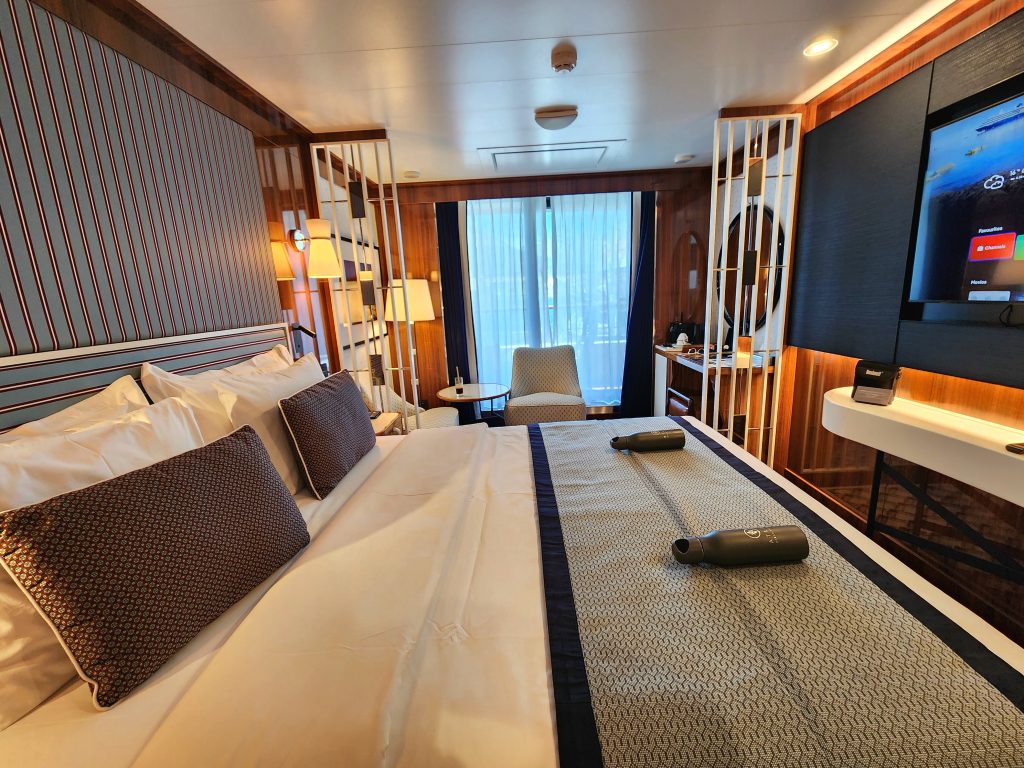
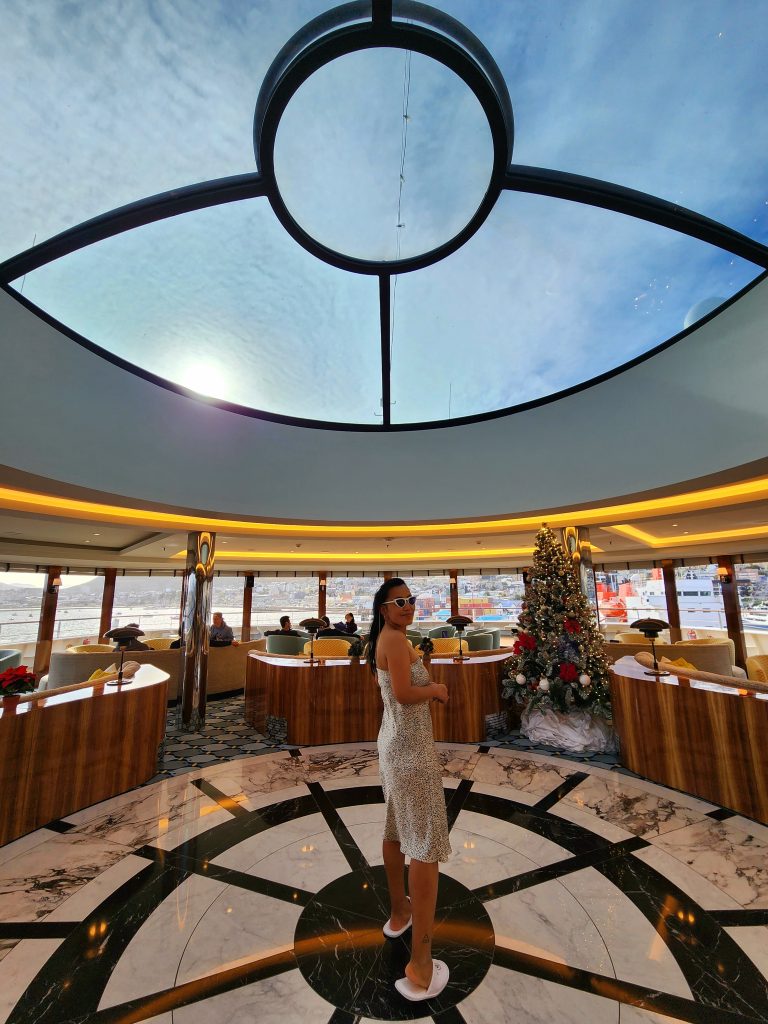
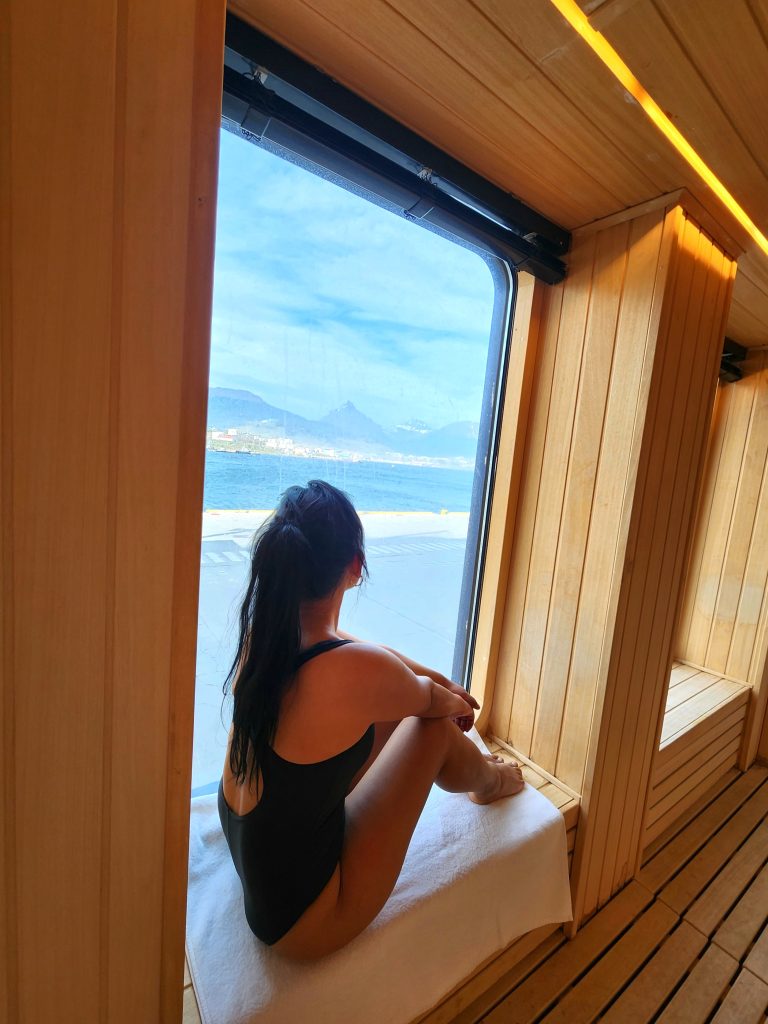



Here’s a step-by-step guide on how I made my Antarctic dream come true:
1. Choosing the right time to visit Antarctica
Antarctica’s travel season runs from November to March, a period when the Southern Hemisphere experiences summer. This window offers the most favorable conditions for travelers, with relatively milder temperatures, longer daylight hours, and abundant wildlife activity. Here’s a closer look at what each month has to offer:
November: The Start of the season
- Advantages:
- Pristine Landscapes: Early-season visitors are treated to untouched snow and ice, creating stunning, pristine landscapes.
- Wildlife Activity: This is the beginning of the breeding season for many animals. Penguins start building nests and laying eggs, while seals can be seen hauling out onto the ice.
- Fewer Crowds: Being the start of the season, there are generally fewer tourists, which means more intimate experiences.
- Considerations:
- Cooler Temperatures: November is typically colder than later months, so be prepared for chillier conditions.
- Ice Conditions: There may still be a significant amount of sea ice, potentially limiting access to certain areas.
December: Milder temperatures and Increased activity
- Advantages:
- Milder Weather: Temperatures start to rise, making for more comfortable conditions.
- Extended Daylight: The summer solstice in December means nearly 24 hours of daylight, perfect for maximizing exploration.
- Wildlife: Penguin chicks begin hatching, and you may spot seal pups. This is also a great time for whale sightings as they begin to arrive.
- Considerations:
- Higher Demand: December, especially around the holidays, is a popular time to visit, so trips can book up quickly. Early planning and booking are essential. More on this below.
January: Peak of the season
- Advantages:
- Warmest Weather: January is the warmest month in Antarctica, with temperatures reaching their peak, making outdoor activities more pleasant.
- Abundant Wildlife: This is a peak time for wildlife activity. Penguin chicks are growing, and you can witness them learning to swim. Whales are abundant, and seals are very active.
- Best Accessibility: The ice has melted sufficiently, allowing ships to access more remote and spectacular sites.
- Considerations:
- Crowds and Cost: As the peak travel time, January can be the busiest and most expensive month. Popular expeditions and accommodations may sell out well in advance.
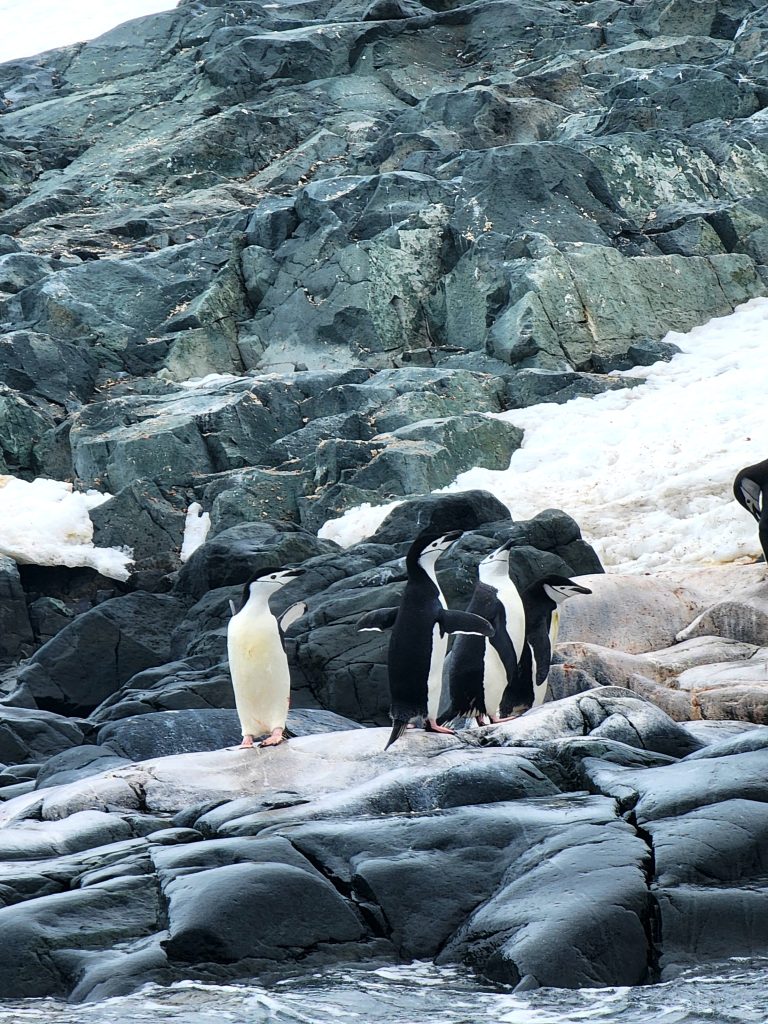
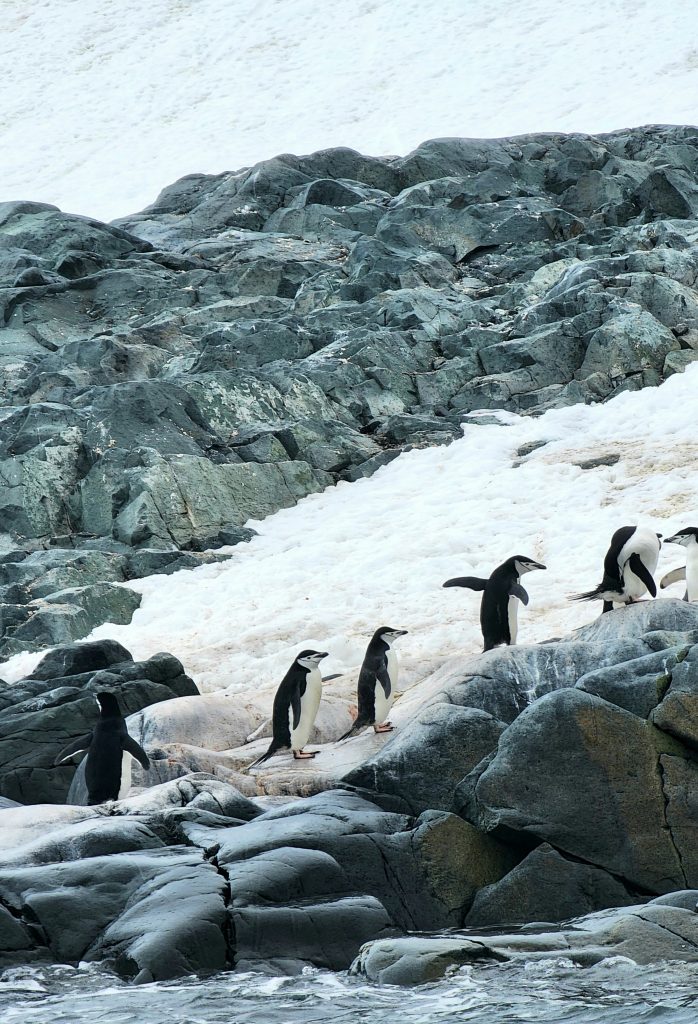

February: Continued wildlife and exploration
- Advantages:
- Warm Temperatures: February continues to offer relatively warm weather, making it a great time for outdoor activities.
- Wildlife Watching: Whale sightings are at their best, and penguin chicks are starting to fledge. Seal pups are also common.
- Ice-Free Waters: The waters are mostly ice-free, providing access to the farthest reaches of the continent.
- Considerations:
- Fewer Snow Landscapes: The snow may not be as pristine as in the earlier months, with more exposed rock.
March: End of the season
- Advantages:
- Wildlife: This is a fantastic time for whale watching, as they prepare for their migration. You may also see adult penguins molting.
- Less Crowded: Fewer tourists mean a more serene experience.
- Sunsets and Sunrises: The shortening days bring back stunning sunrises and sunsets, creating beautiful photo opportunities.
- Considerations:
- Cooling Temperatures: As the season winds down, temperatures start to drop again.
- Variable Conditions: Weather can be more unpredictable, and some areas may become inaccessible as ice begins to reform.
Why I chose late December to visit my final continent?
This timing was perfect for several reasons:
- New Year’s Eve: Ringing in the New Year in such a unique and remote location was an unforgettable experience. The nearly 24-hour daylight added a magical touch to the celebration.
- Ideal Weather: The temperatures were relatively mild, which made the outdoor excursions more enjoyable.
- Wildlife Encounters: The wildlife activity was at its peak. Seeing penguin chicks hatching and the arrival of whales were highlights of the trip.
- Logistics: I had few countries left to visit in South America so I combined them with Antarctica. It just so happened to be right before the new years eve, so celebrated this 2024 new years in Antarctica and spent 10 amazing days! I hope you will make it, it is def worth it.
Choosing the right time to visit Antarctica is crucial to ensuring a memorable and rewarding experience. Whether you prefer the pristine landscapes of December or the peak wildlife activity of January, each month offers its own unique advantages. Planning ahead and aligning your trip with your personal interests will help you make the most of your Antarctic adventure.
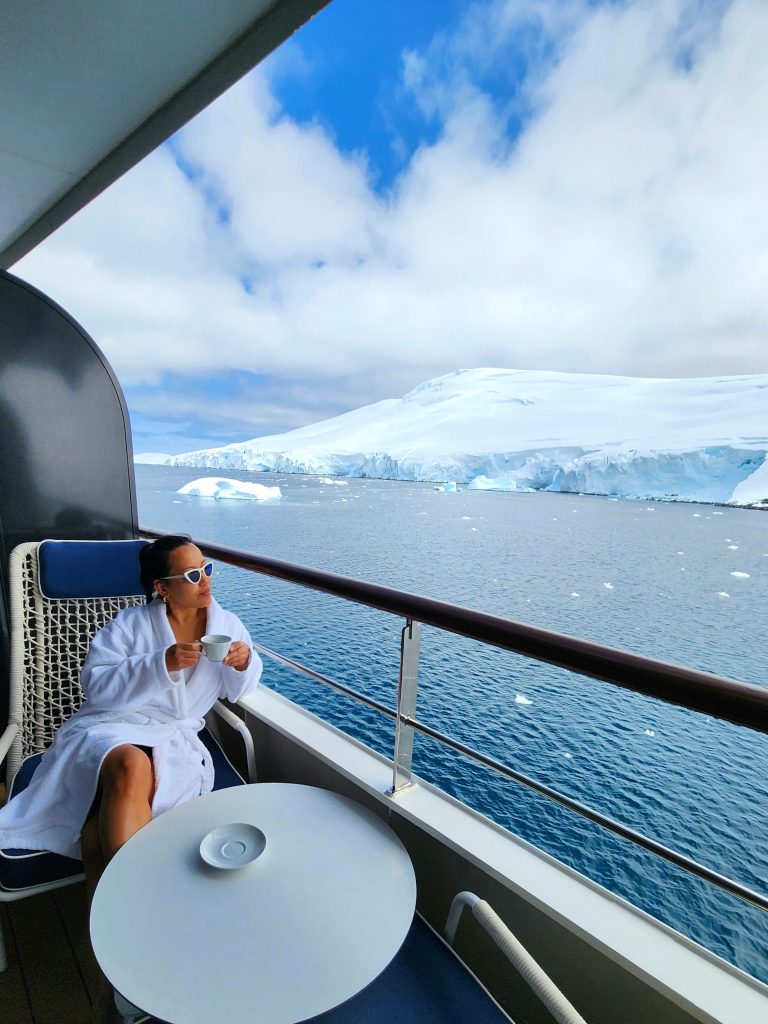
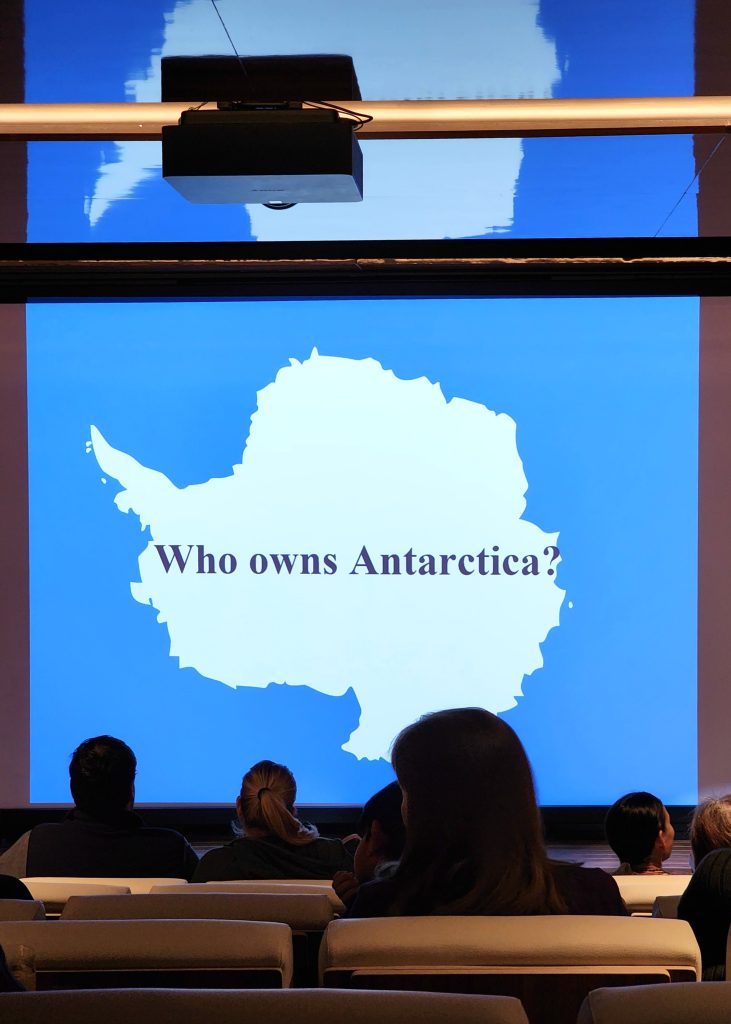
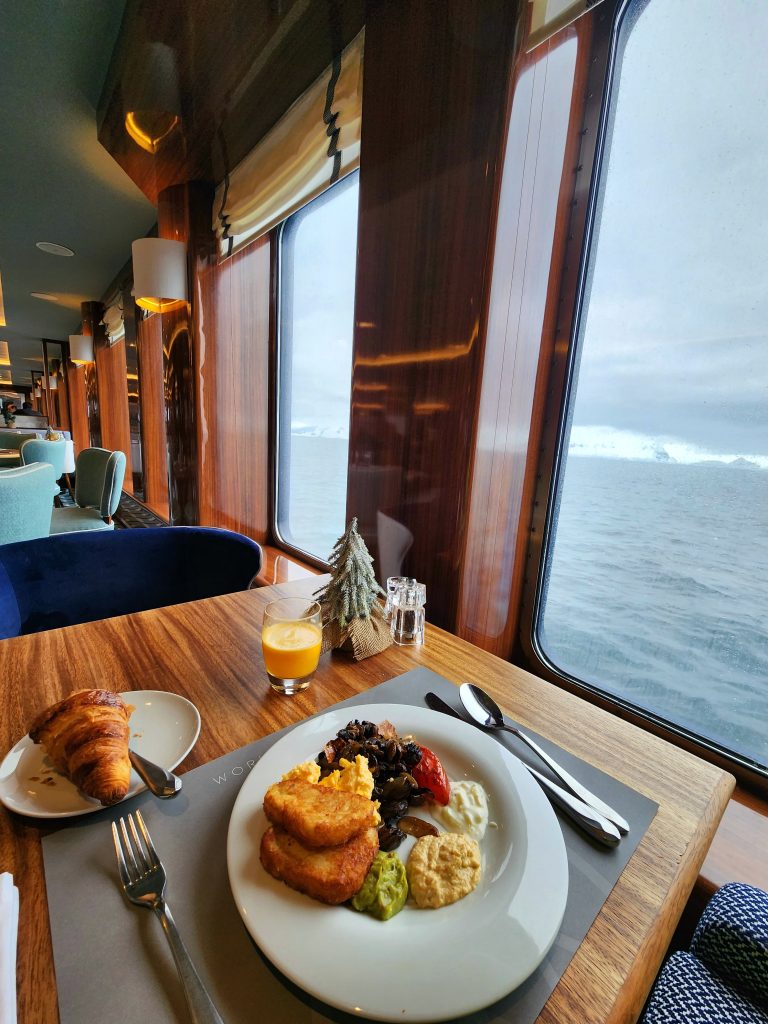
2. Selecting a tour operator for your Antarctic adventure
Choosing the right tour operator/ Antarctic cruise is a critical step in planning your trip to Antarctica. Given the remote and challenging environment, it’s essential to go with a company that priorities safety, provides a comprehensive itinerary, and employs knowledgeable guides. Here’s a detailed look at how to select the best tour operator for your Antarctic expedition ship especially if it’s your first time:
Research and Reviews
Start by researching various tour operators that specialise in Antarctic polar expeditions. Look for companies with a strong reputation and positive reviews from previous travellers.
If you would like the contact details of the company I went with, email me at anna (at) annasherchand (dot) com with subject Antarctica
Needless to say, you may start your research online and finally book on site while in Buenos Aires or last minute in Ushuaia, South America or if you are have set dates between Nov-March you may want to book in advance once you are happy with price per person, tour itinerary and everything that matters to you. I share highlights of my trip towards the end.
Consider the following:
- Reputation: Choose an operator with a long-standing history of successful Antarctic expeditions in polar regions.
- Customer Reviews: Read reviews and testimonials on travel forums, websites, and social media to get insights into the experiences of other travellers.
- Accreditations: Ensure the operator is a member of reputable organisations such as the International Association of Antarctica Tour Operators (IAATO), which sets guidelines for responsible and sustainable travel in the region.
Itinerary and Activities
Different tour operators/ships offer varying itineraries and activities. Consider what’s most important to you and look for an operator that aligns with your interests:
- Duration: Expeditions can range from 10 days to several weeks. Choose an itinerary that fits your schedule and desired level of immersion.
- Activities: Look for operators that offer a variety of activities such as kayaking, camping on the ice, Zodiac excursions, and wildlife watching. (On my cruise we have some people opt in for camping in NYE and Kayaking. I opt in for daily Zodiac excursions and polar plunge! Saw so many Chinstrap, emperor penguins and tons of other penguins too. Did you know they mate for life?!)
- Landings: Check how many shore landings and excursions are included. More frequent landings provide better opportunities for exploration and wildlife encounters.
Safety Measures
Safety is paramount when traveling to Antarctica. Make sure the tour operator/cruise line has robust safety protocols in place:
- Qualified Crew: The expedition team should include experienced captains, expedition leaders, and naturalists with extensive knowledge of the region.
- Emergency Procedures: The operator should have comprehensive emergency procedures, including medical facilities and evacuation plans.
- Ship Safety: Ensure the vessel is ice-strengthened and equipped with modern navigation and safety equipment.

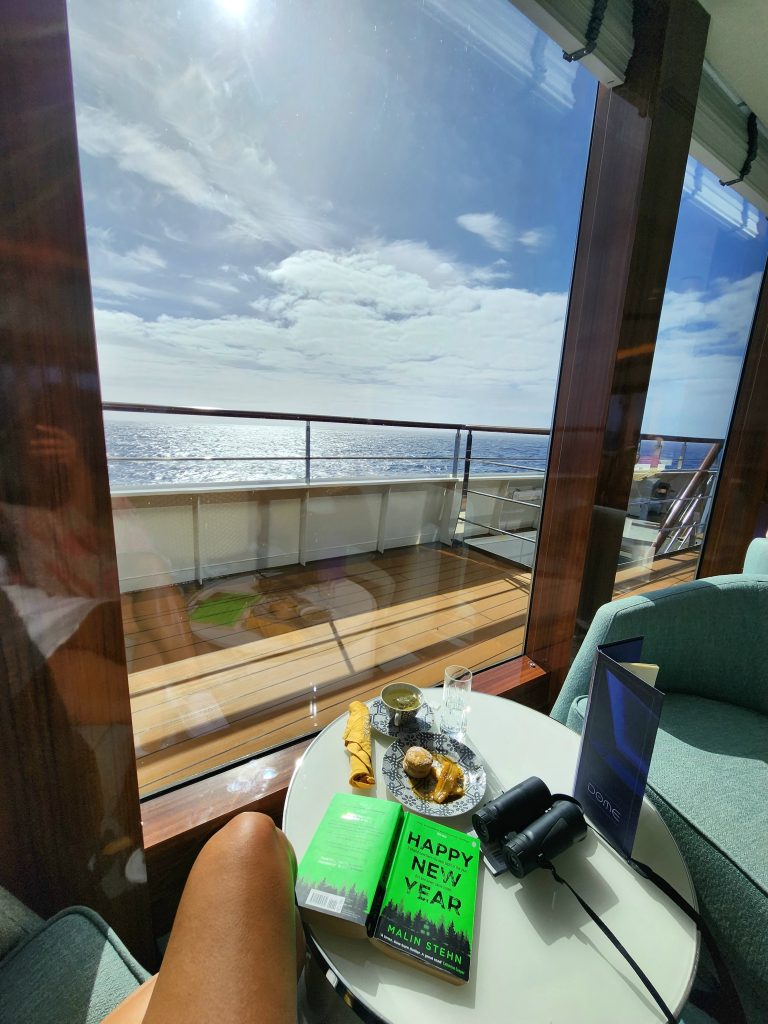


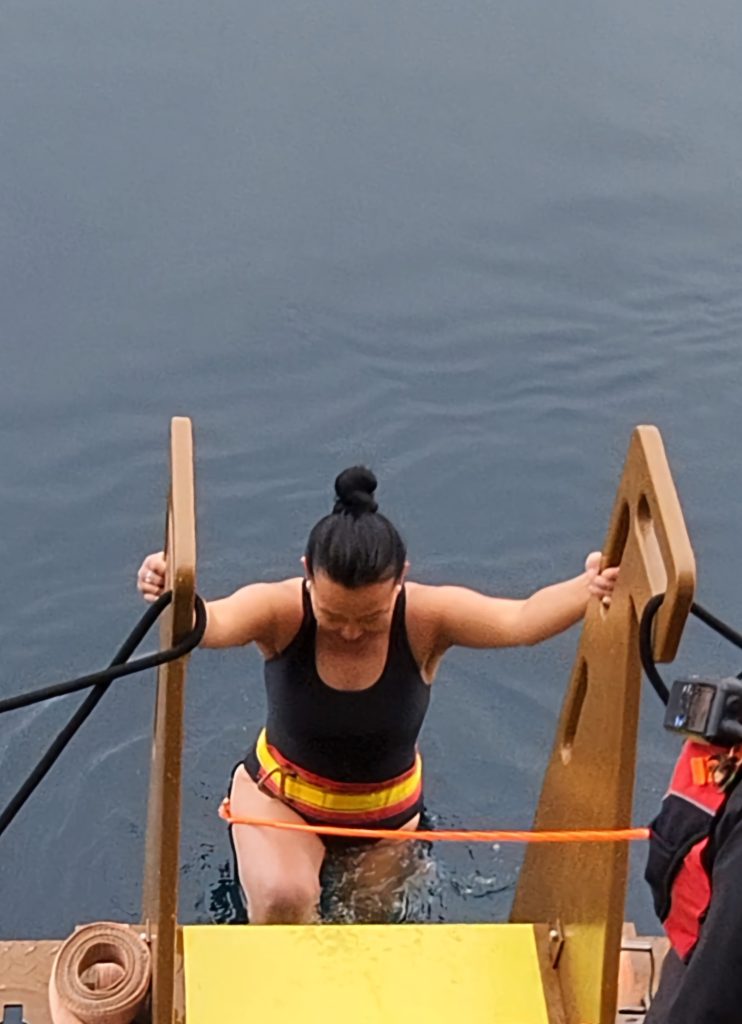
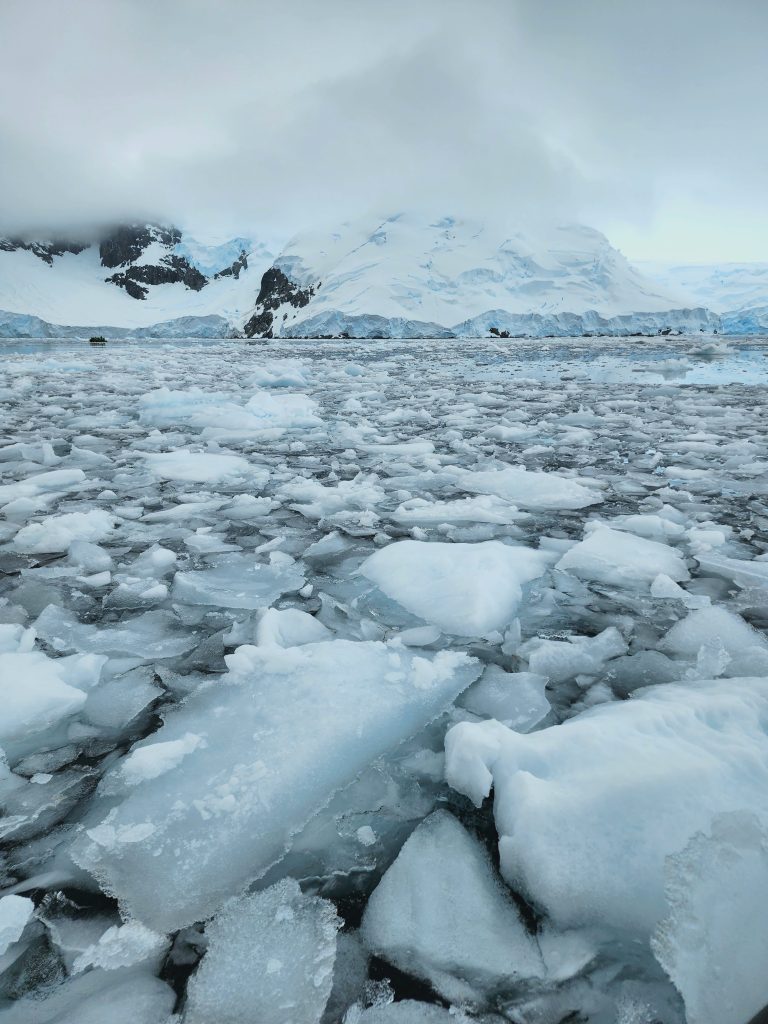
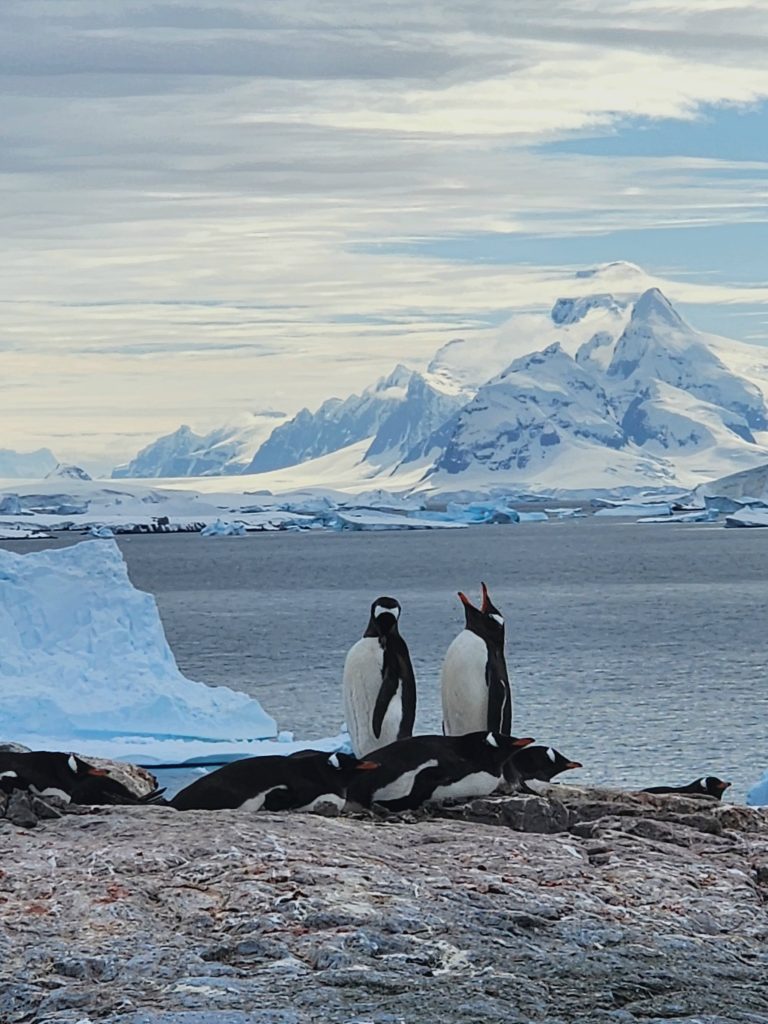

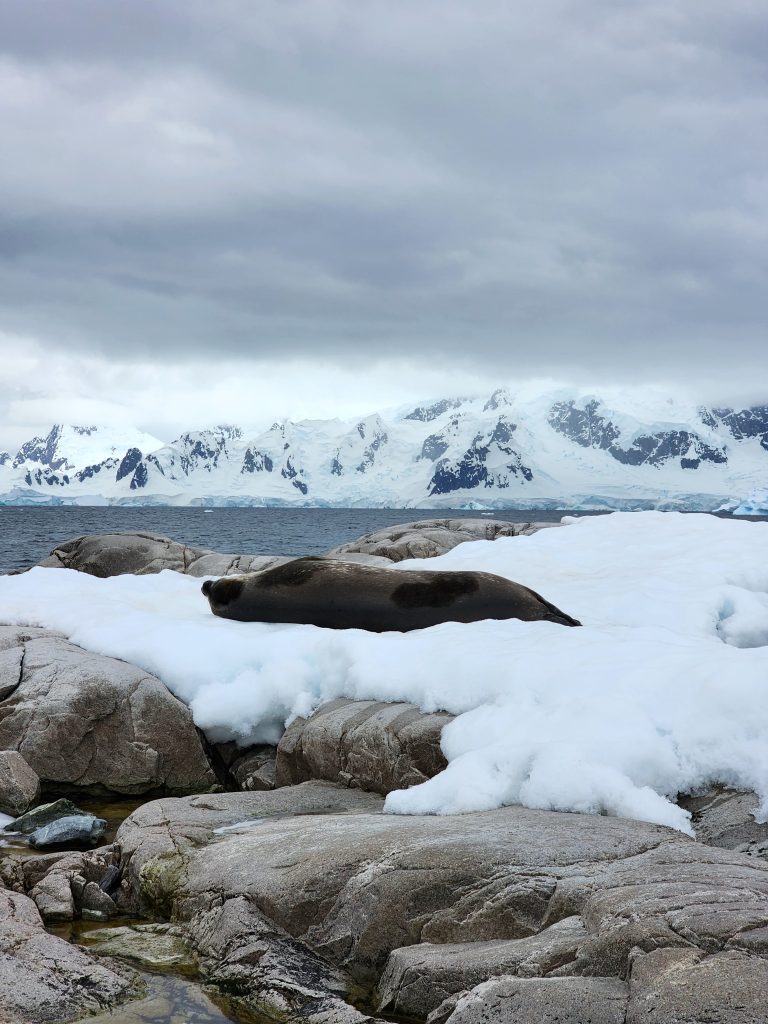
Knowledgeable Guides
Having knowledgeable and experienced guides can significantly enhance your Antarctic experience:
- Expertise: Guides should be experts in Antarctic wildlife, geology, and history. They should be able to provide informative lectures and insights during the trip. On the cruise I was, during the few cloudy days, the itinerary included some interactive lectures which were interesting.
And we get to visit the engine room as well as captain’s engine room. - Passion: Passionate guides who love sharing their knowledge can make the journey more engaging and memorable.
Environmental Responsibility
Antarctica is one of the most pristine environments on Earth, and preserving its ecosystem is crucial:
- Sustainable Practices: Choose an operator committed to sustainable and environmentally responsible practices, such as minimising waste, using eco-friendly products, and respecting wildlife.
- IAATO Membership: Operators who are members of IAATO adhere to strict guidelines to protect the Antarctic environment.
Booking in Advance
Antarctic expeditions are incredibly popular, and spots fill up quickly, often a year or more in advance. Here are some tips for booking:
- Plan Early: Start planning and booking your trip at least 12 to 18 months in advance to secure your preferred dates and itinerary. You might be lucky to get early promo offers!
- Flexible Dates: If possible, be flexible with your travel dates to increase your chances of finding available spots.
- Deposit and Payments: Be prepared to pay a deposit when booking, with the balance due closer to the departure date. Understand the operator’s cancellation and refund policies.
After extensive research, I chose a reputable tour operator that ticked all the boxes:
- Well-Rounded Itinerary: The itinerary included diverse activities such as kayaking, Zodiac excursions, and visits to penguin colonies, ensuring a well-rounded experience.
- Safety Measures: The operator had a strong emphasis on safety, with a qualified crew and robust emergency procedures.
- Knowledgeable Guides: The guides were experts in Antarctic wildlife and history, providing insightful lectures and enriching the overall experience.
3. Pros and cons of small vs. big expedition ships for Antarctica

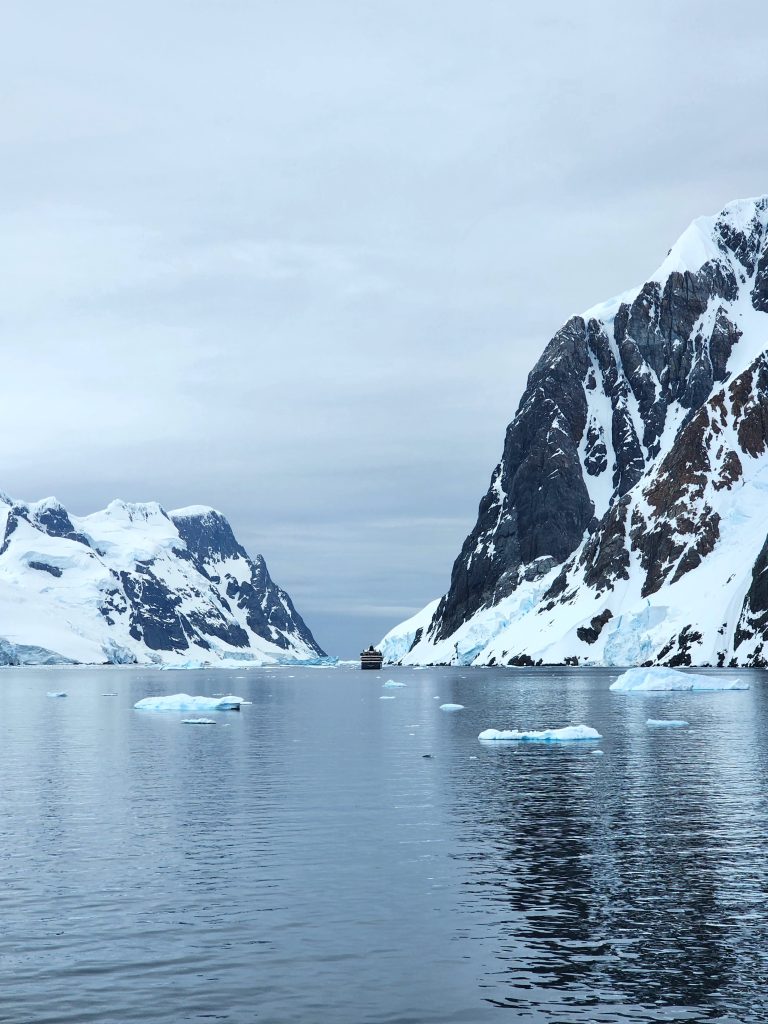
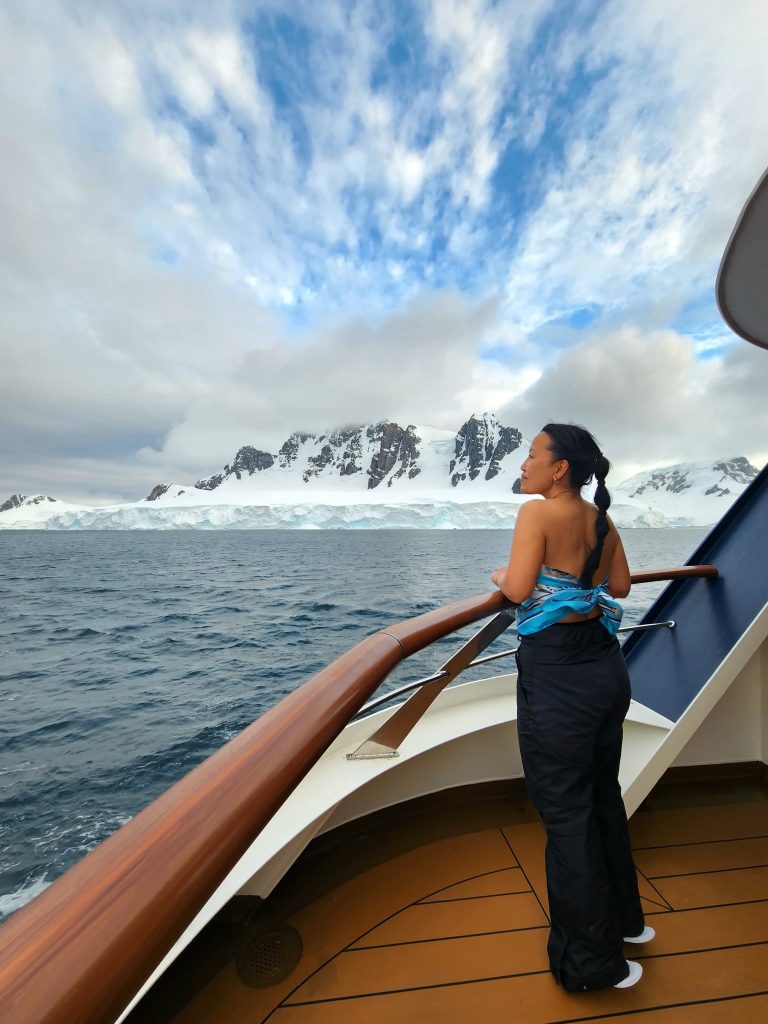
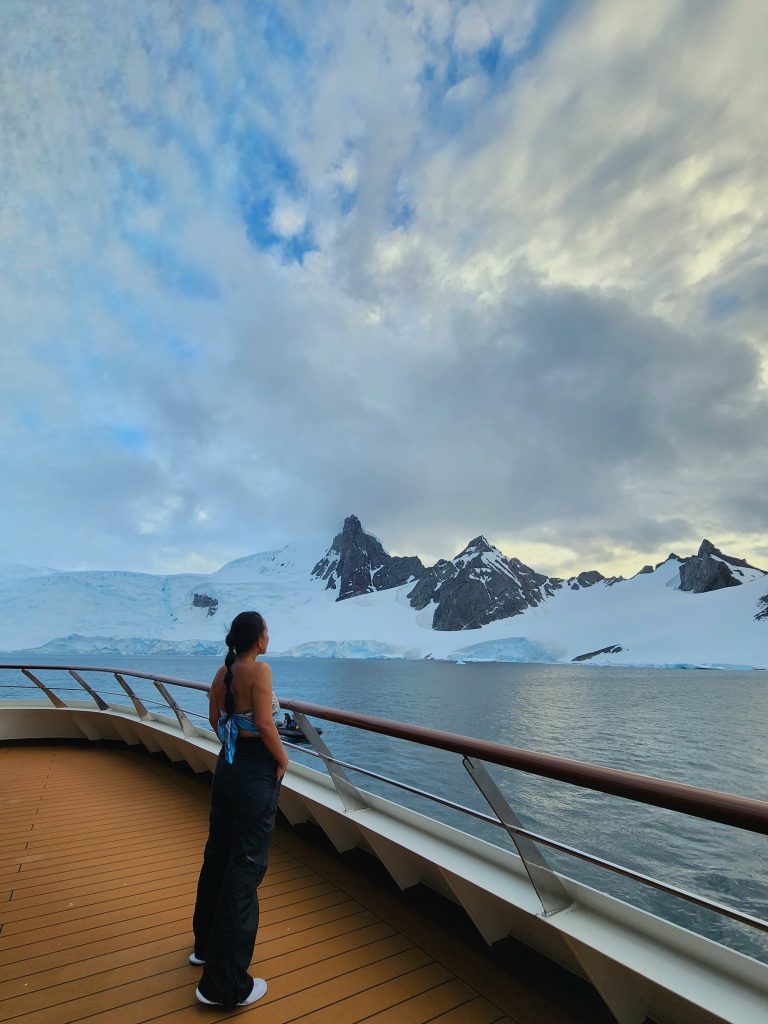


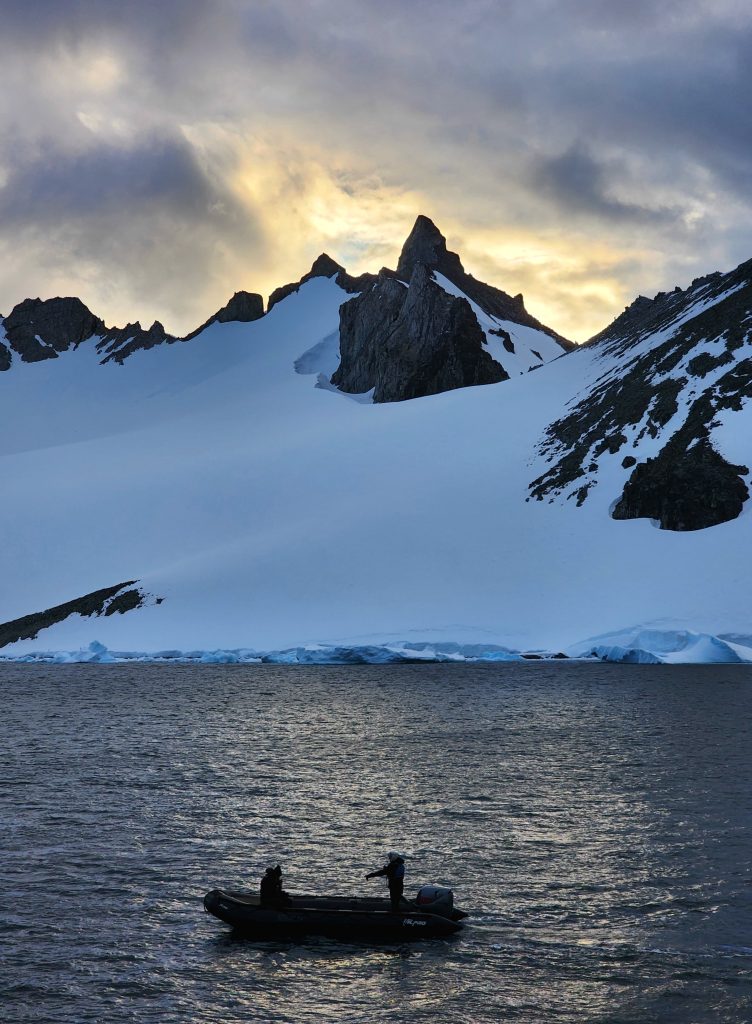
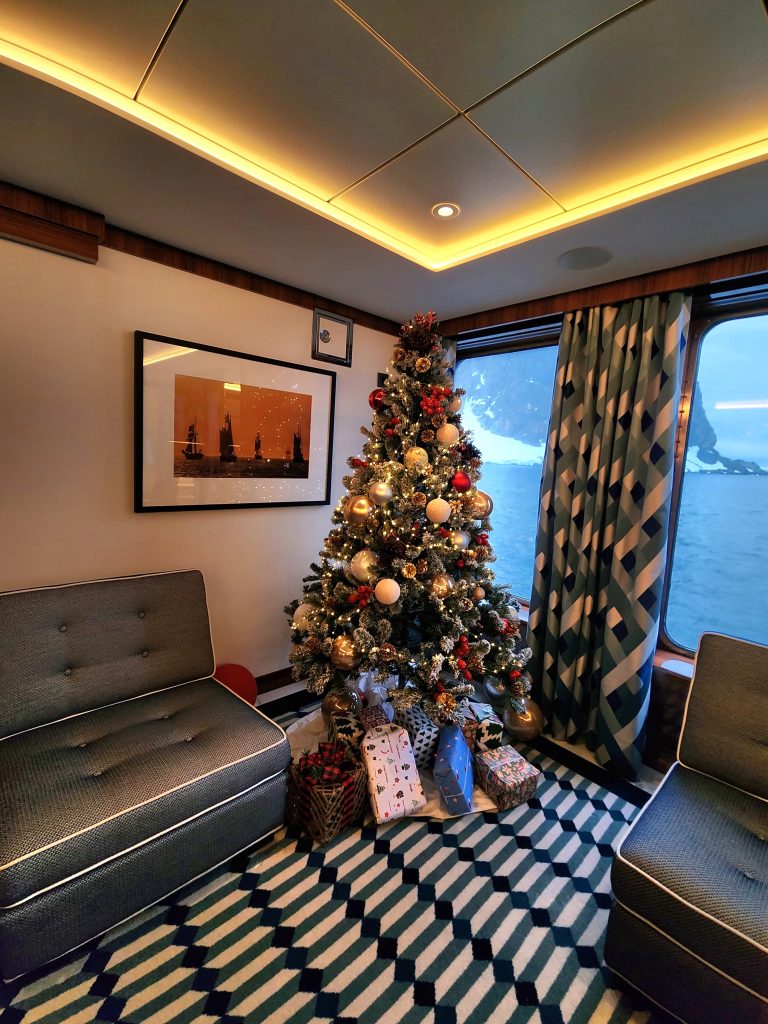
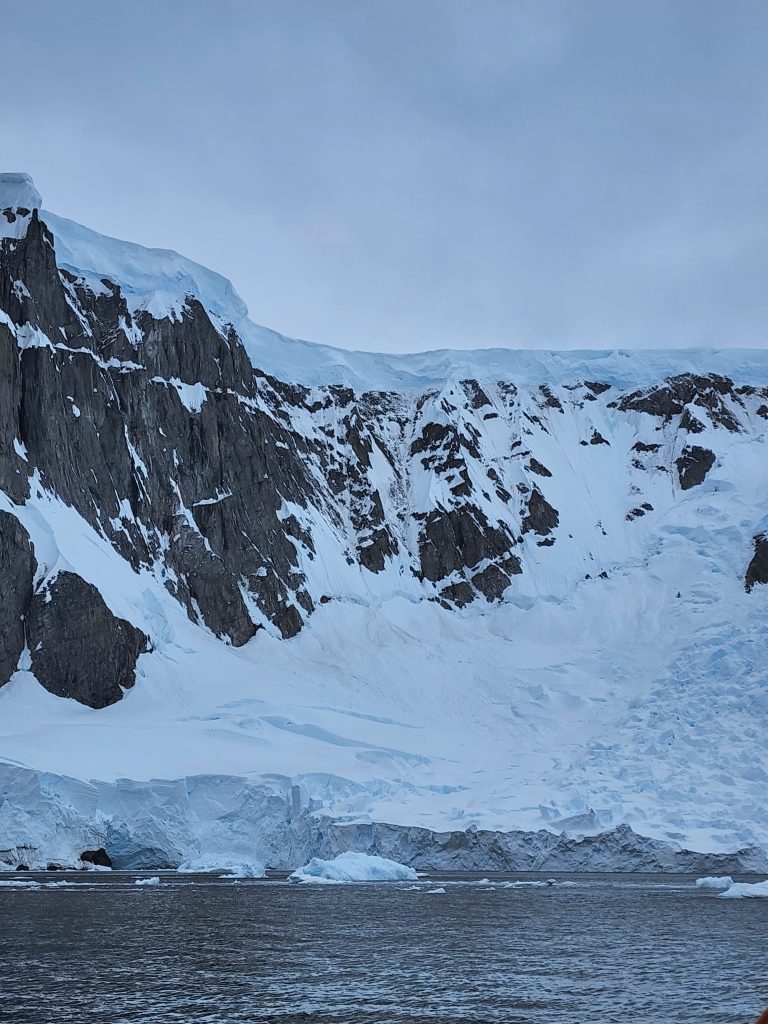
When planning your Antarctic adventure, one of the key decisions you’ll need to make is whether to travel on a small or large cruise ship. Each option has its own set of advantages and disadvantages, which can significantly impact your experience.
Small Cruise Ships
Pros:
- Intimate Experience: With fewer passengers, small cruise ships offer a more personalised and intimate experience. You’ll have more opportunities to interact with the crew and guides.
- Frequent Landings: Smaller ships can make more frequent shore landings, allowing you to explore more sites and get closer to wildlife.
- Access to Remote Areas: These ships can navigate narrower passages and reach remote areas that larger vessels cannot, providing a more immersive and adventurous experience.
Cons:
- Limited Amenities: Small ships may have fewer amenities and entertainment options compared to larger vessels.
- Potential for Motion Sickness: Smaller ships are more susceptible to rough seas, which can lead to a bumpier ride and an increased chance of motion sickness.
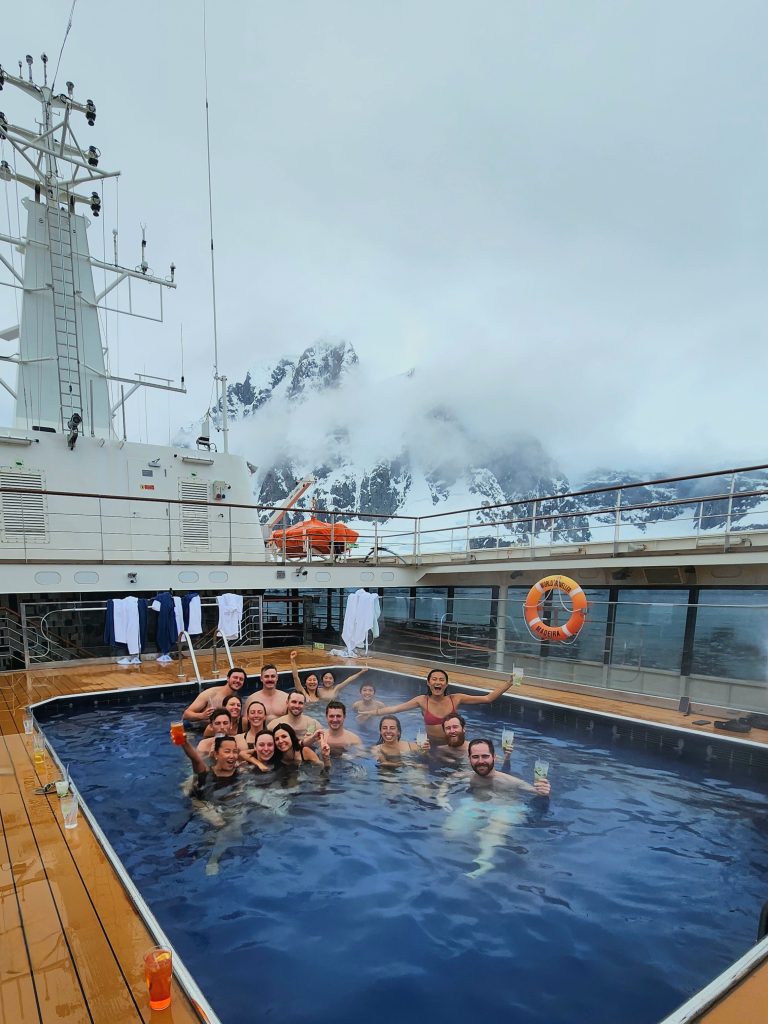




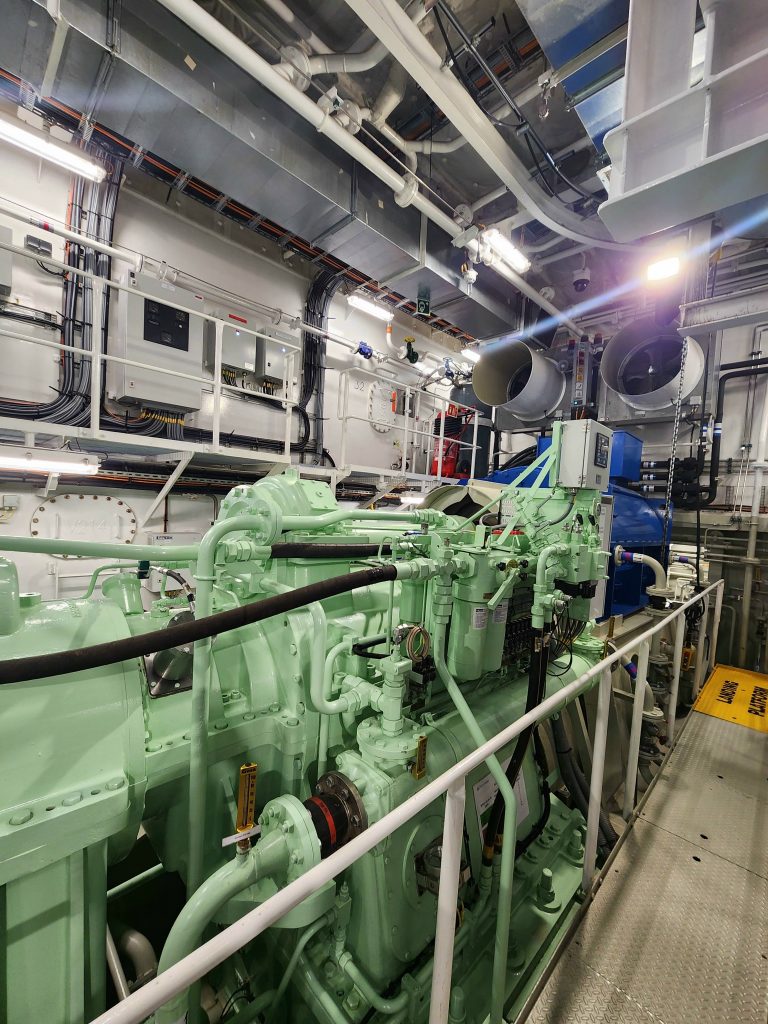

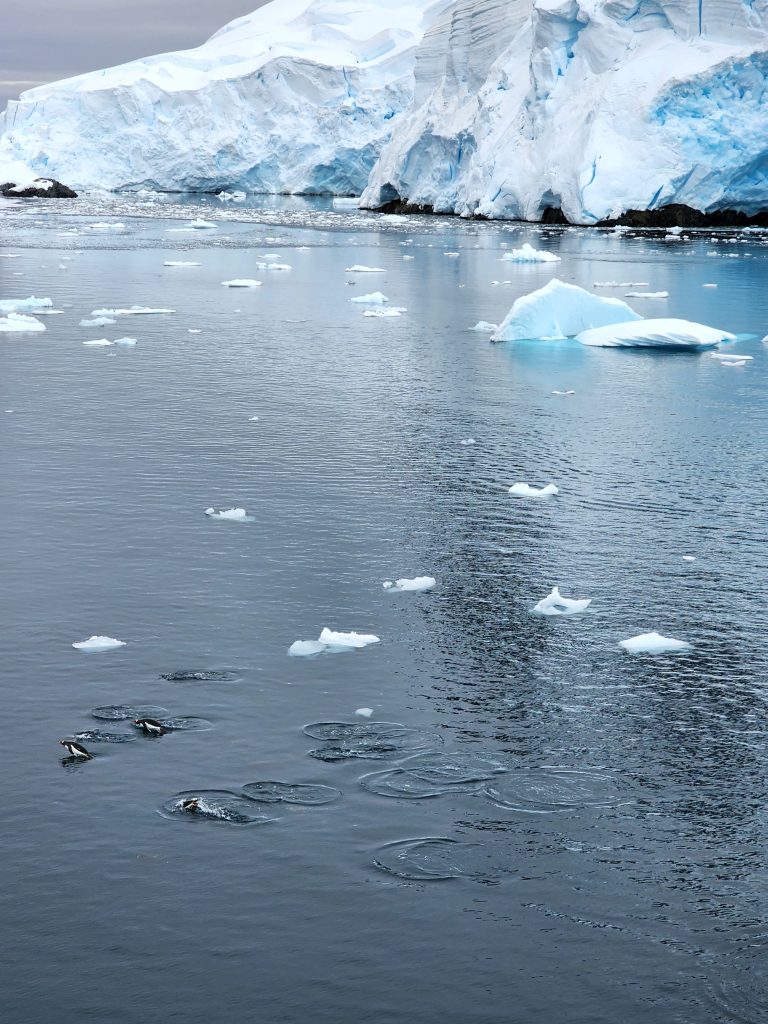
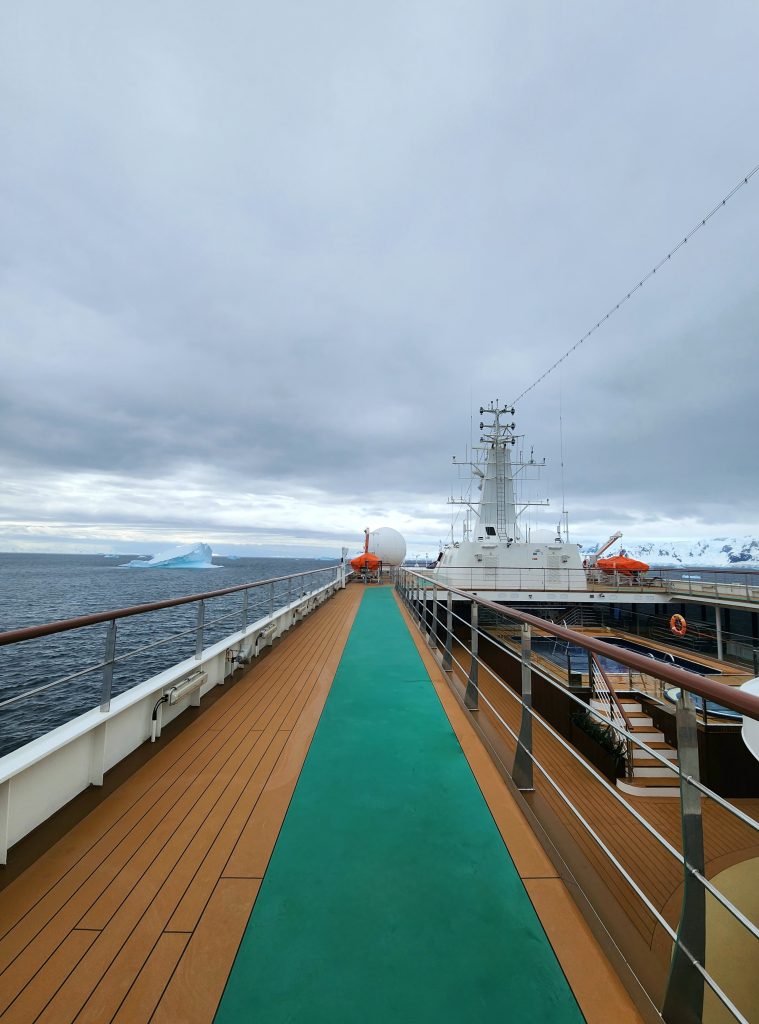
Large Cruise Ships
Pros:
- Comfort and Amenities: Larger ships offer a wide range of amenities, including multiple dining options, entertainment facilities, and more luxurious accommodations.
- Stability: Bigger ships provide a smoother ride, which can be beneficial for those prone to seasickness.
- Social Opportunities: With more passengers on board, there are greater opportunities to meet fellow travellers and participate in a variety of onboard activities.
Cons:
- Fewer Landings: Due to the larger number of passengers, disembarkation processes are more complex, resulting in fewer shore landings and less time spent exploring on land.
- Limited Access to Remote Areas: Large ships are restricted to certain routes and cannot access some of the more remote and narrow passages that smaller ships can navigate.
- Less Personalised Experience: The sheer size and number of passengers can make the experience feel less personal and more crowded.
Choosing between a small and large cruise ship for your Antarctic expedition depends on your personal preferences and what kind of experience you seek.
If you value intimate, immersive experiences and are willing to sacrifice some amenities, a small ship might be the best choice. However, if you prefer comfort, stability, and a wider range of amenities, a larger ship could be more suitable. Both options offer unique advantages, so consider what matters most to you when making your decision.
4. Packing essentials for Antarctica
How to plan a trip to Antarctica wouldn’t be complete without covering what to pack because packing for Antarctica requires careful consideration and planning to ensure you stay warm, comfortable, and prepared for the unique conditions. Hence BEFORE you go shopping, I suggest to check with your tour operator, whether your booking includes any jackets. I was so glad, mine came with a Big thick jacket with layers and some other goodies too. (The only issue was me carrying it around on the rest of my South America trip where the temperature was 30+ degree in January. Probably could have posted it back but I didn’t mind, I only travel with carry on anyway)
Plus there were surprise little gifts by the cruise on the last day! I like them all and will show you all of it on my instagram (I would appreciate your follow and support there as I am starting over in a new account, thanks 🙂
Anyway here’s a detailed list of essentials you shouldn’t miss:

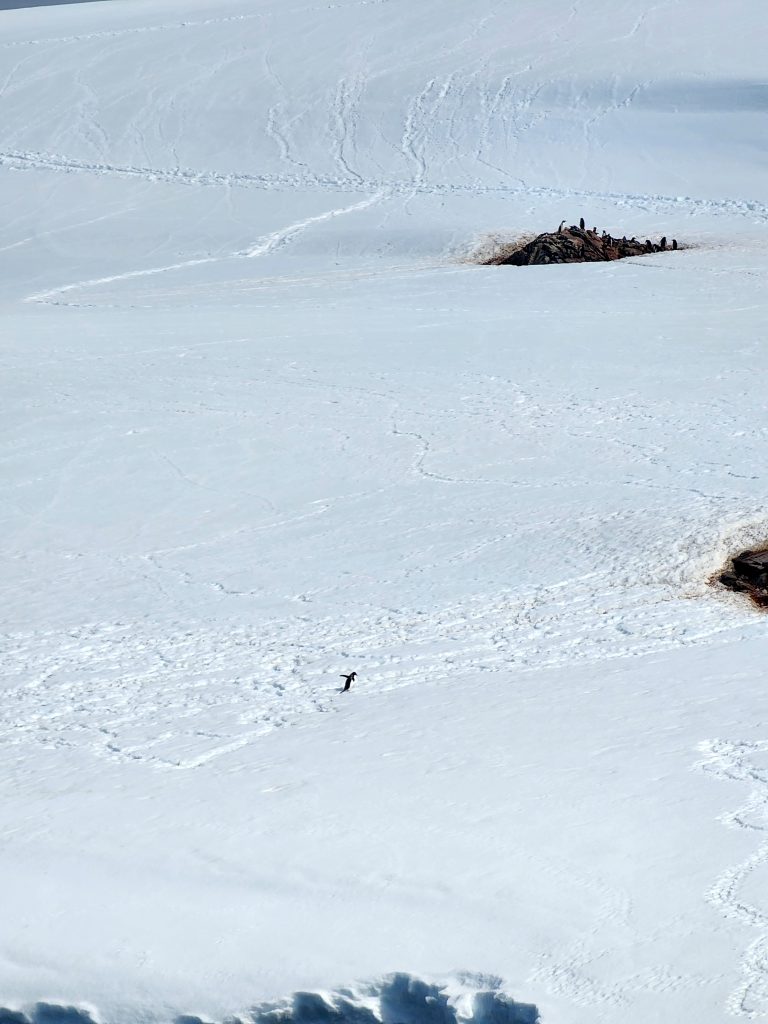
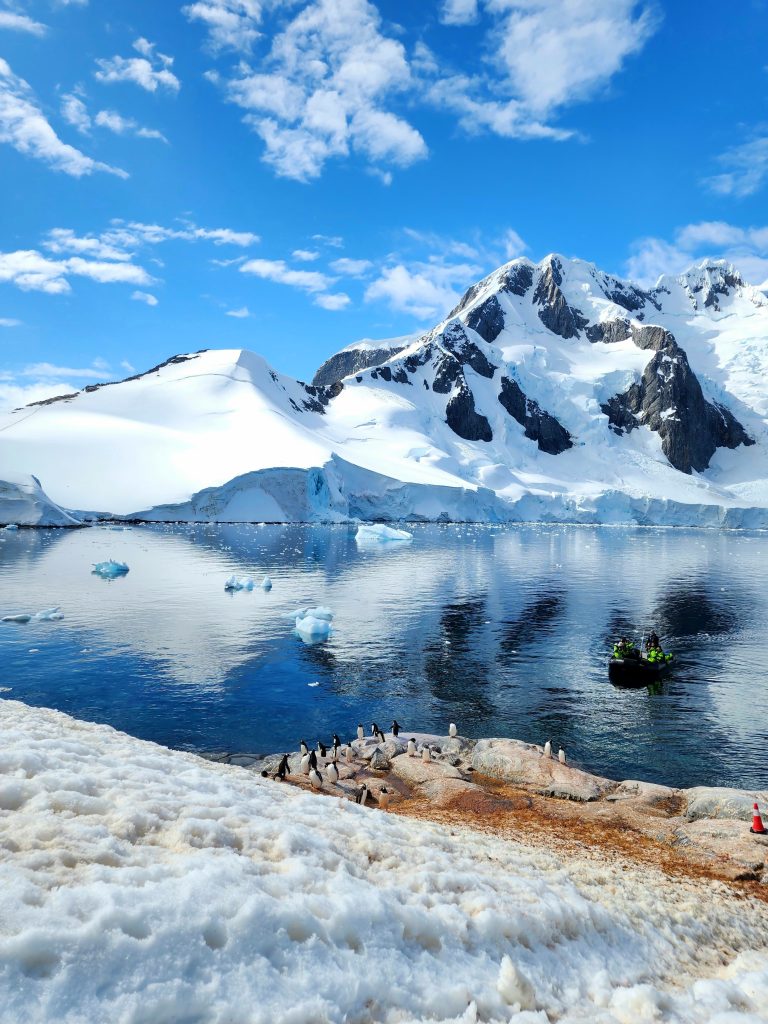

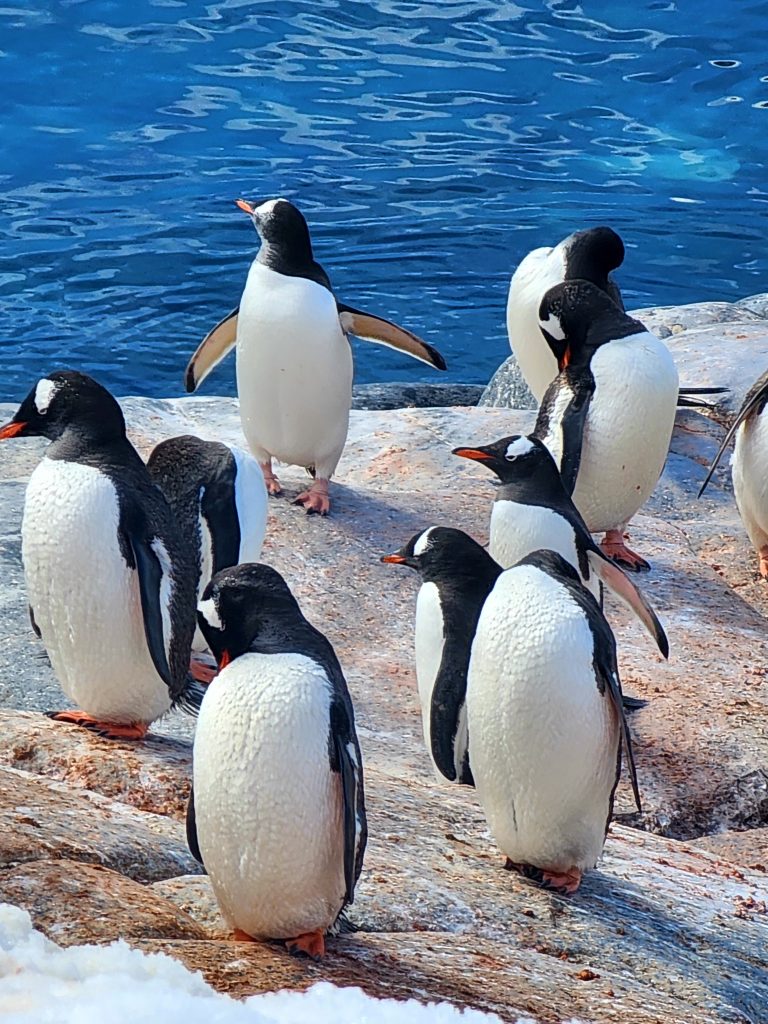
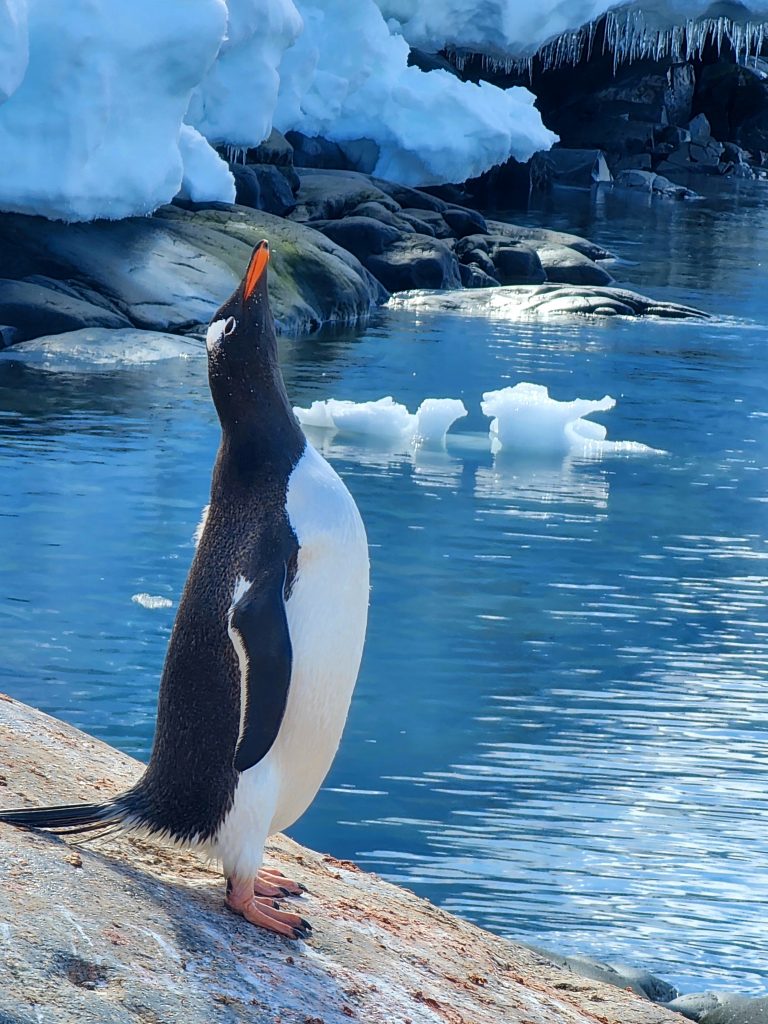
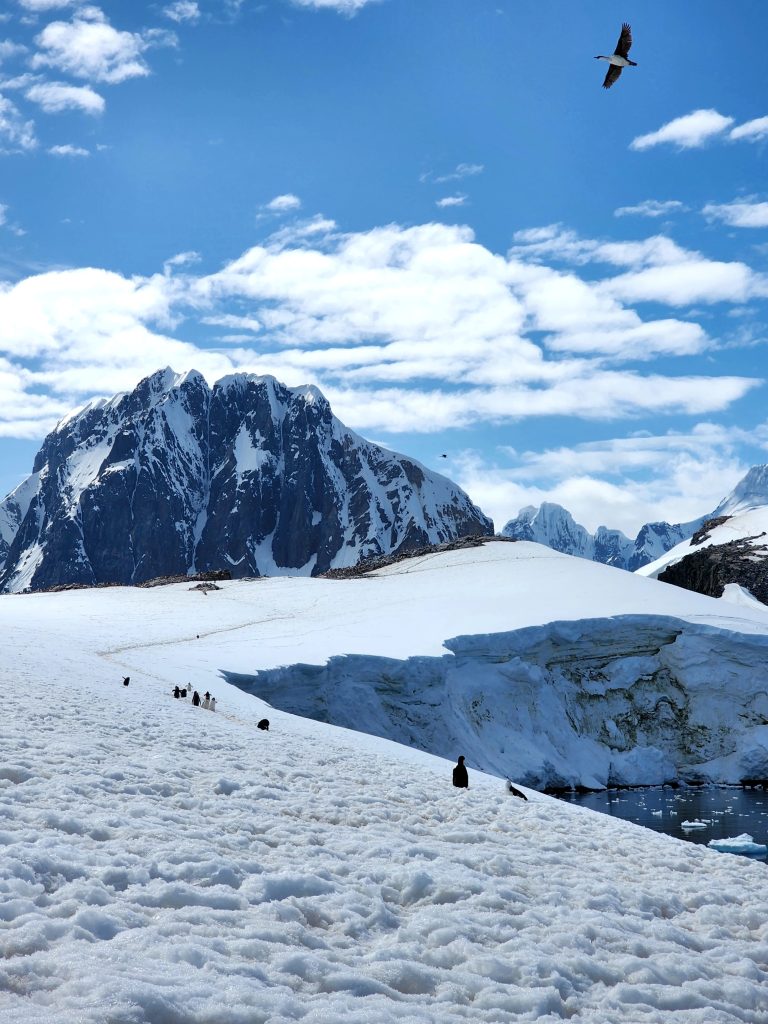

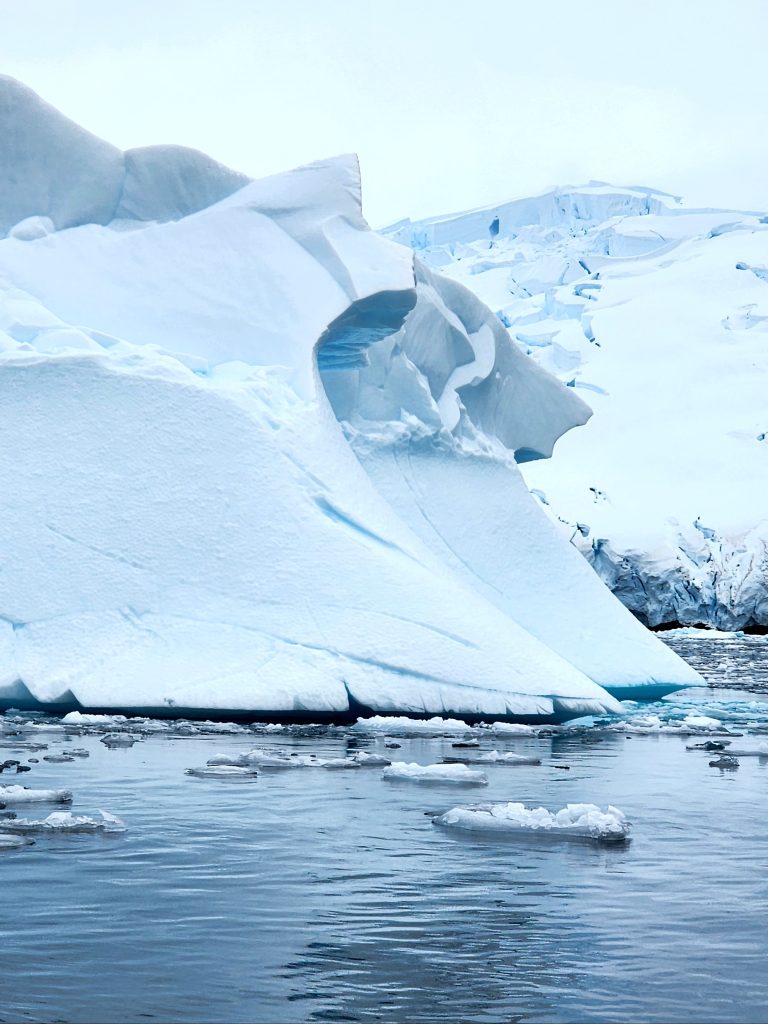
Layered Clothing
Layering is the key to staying warm and comfortable in the ever-changing Antarctic weather. Here’s a breakdown of the layers you’ll need:
- Thermal Base Layers: Start with moisture-wicking thermal tops and bottoms. These should be made of materials like merino wool or synthetic fabrics that keep you warm and dry.
- Insulated Mid-Layers: Add fleece or down jackets and pants for insulation. These layers trap heat and provide crucial warmth without adding too much bulk.
- Waterproof Outer Layers: A waterproof and windproof jacket and pants are essential to protect you from the elements. Look for breathable fabrics like Gore-Tex to keep you dry while allowing moisture to escape.
Footwear
Your feet need to stay warm and dry, especially during landings and excursions:
- Waterproof Boots: Insulated, waterproof boots with good grip are a must. They should be high enough to keep snow and water out and provide stability on icy surfaces. Again, check with your tour operator as the ship I was on provided boots.
- Wool or Thermal Socks: Bring several pairs of high-quality wool or thermal socks to keep your feet warm and dry. Avoid cotton, as it retains moisture and can lead to cold feet.
Accessories
Small accessories can make a big difference in your comfort level:
- Hats: A warm hat that covers your ears is essential. Consider bringing a spare in case one gets wet.
- Gloves: It’s a MUST if you want to take pictures! Insulated, waterproof gloves are crucial. Bring a pair of lightweight liner gloves as well, so you can operate your camera and other equipment without exposing your hands to the cold.
- Neck Gaiters and Balaclavas: These provide extra warmth and protection for your face and neck against the cold and wind.
- Sunglasses or Goggles: The sun’s reflection off the ice can be intense. Polarized sunglasses or goggles with UV protection will help prevent snow blindness.
Camera Gear
Antarctica’s stunning landscapes and wildlife provide endless photo opportunities. Even if you are not a photo person you will be tempted I am positive.
- Camera and Lenses: Use your phone as I did or Bring a high-quality camera and a range of lenses to capture wide landscapes and distant wildlife. Waterproof cases or dry bags are also recommended.
- Extra Batteries and Memory Cards: Cold weather can drain batteries quickly, so bring extras. Ample memory cards will ensure you don’t run out of space.
- Tripod and Stabilisers: A lightweight, sturdy tripod or other stabilisers can help you take clear, sharp photos in windy conditions.
Personal Items
Don’t forget these personal essentials:
- Sunscreen: Despite the cold, the sun’s UV rays can be strong, especially when reflecting off the ice. A high-SPF sunscreen is essential to protect your skin.
- Lip Balm: The cold, dry air can cause chapped lips. Bring a moisturising lip balm with SPF.
- Medications: Bring any necessary medications, as well as a basic first aid kit. Motion sickness tablets are also recommended for the potentially rough seas.
- Reusable Water Bottle: Staying hydrated is important, even in cold climates. A thermos can be useful for keeping drinks warm.
- Binoculars: A good pair of binoculars will enhance your wildlife viewing experience, allowing you to see birds and marine animals up close.
Packing for Antarctica requires careful planning and attention to detail to ensure you are prepared for the extreme conditions. By focusing on layered clothing, appropriate footwear, essential accessories, camera gear, and personal items, you can stay warm, dry, and ready to fully enjoy your Antarctic adventure. Remember, the key to a successful trip is preparation, so take the time to pack thoughtfully and thoroughly.
5. Travel Insurance
Given the remote nature of Antarctica, comprehensive travel insurance is recommended but I didn’t get one. Not to sound overly dramatic but if it’s my time to go, I am not going to fight it. I have lived a pretty satisfying life filled with 90+ countries so I’m good. That said, you should probably get the insurance in case something was to go wrong, might cover it, although one time I had it, my phone was stolen and I got nothing back. However, if you are going to get it, ensure your policy covers emergency evacuation, medical expenses, theft, and trip cancellations.
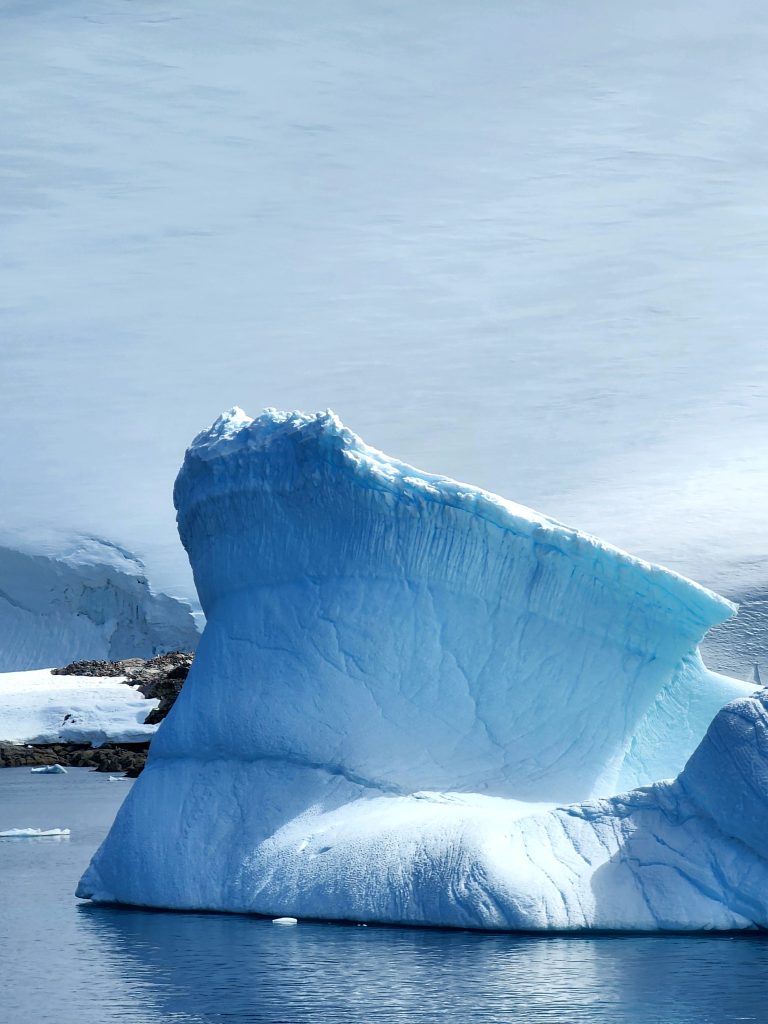
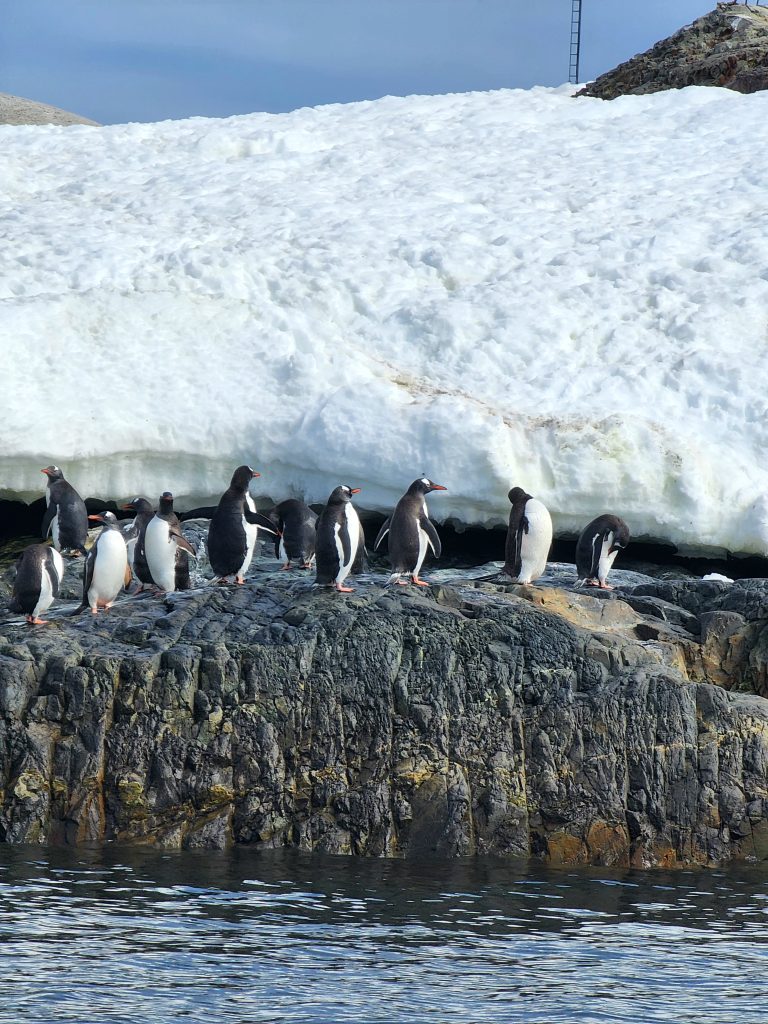

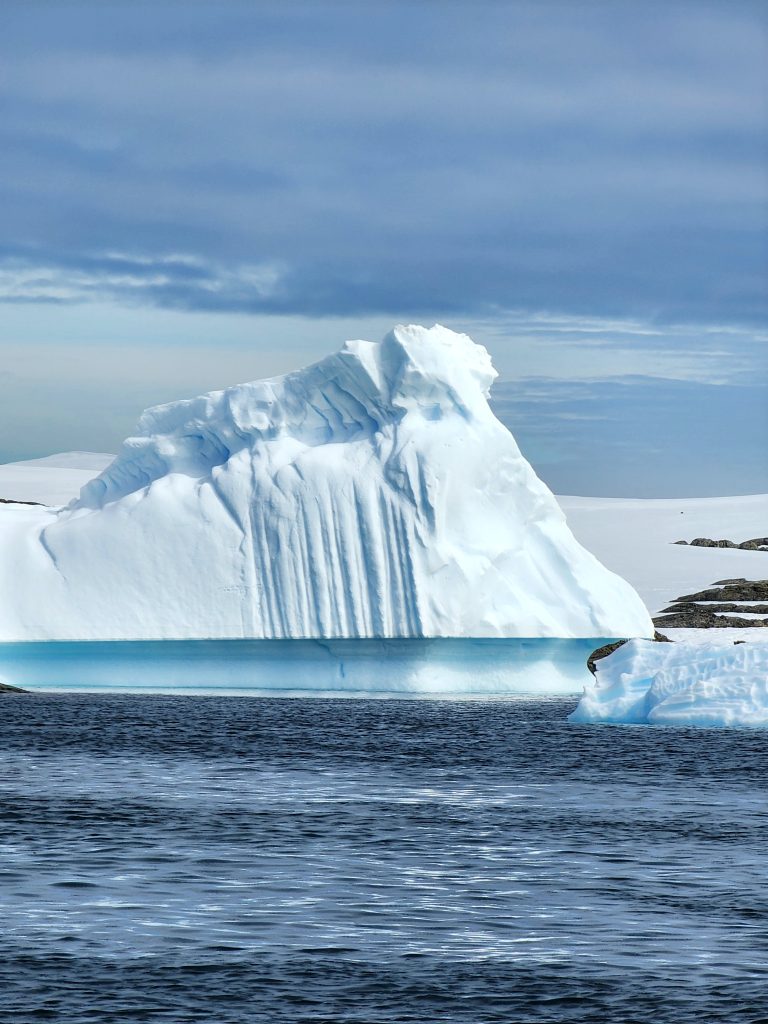

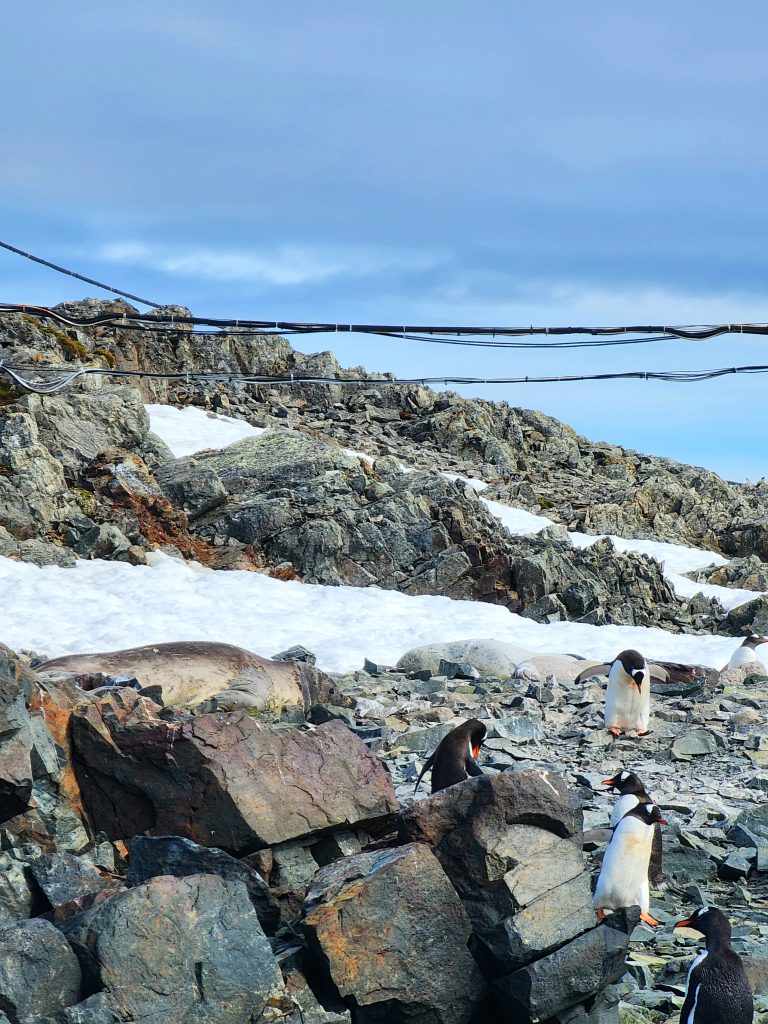

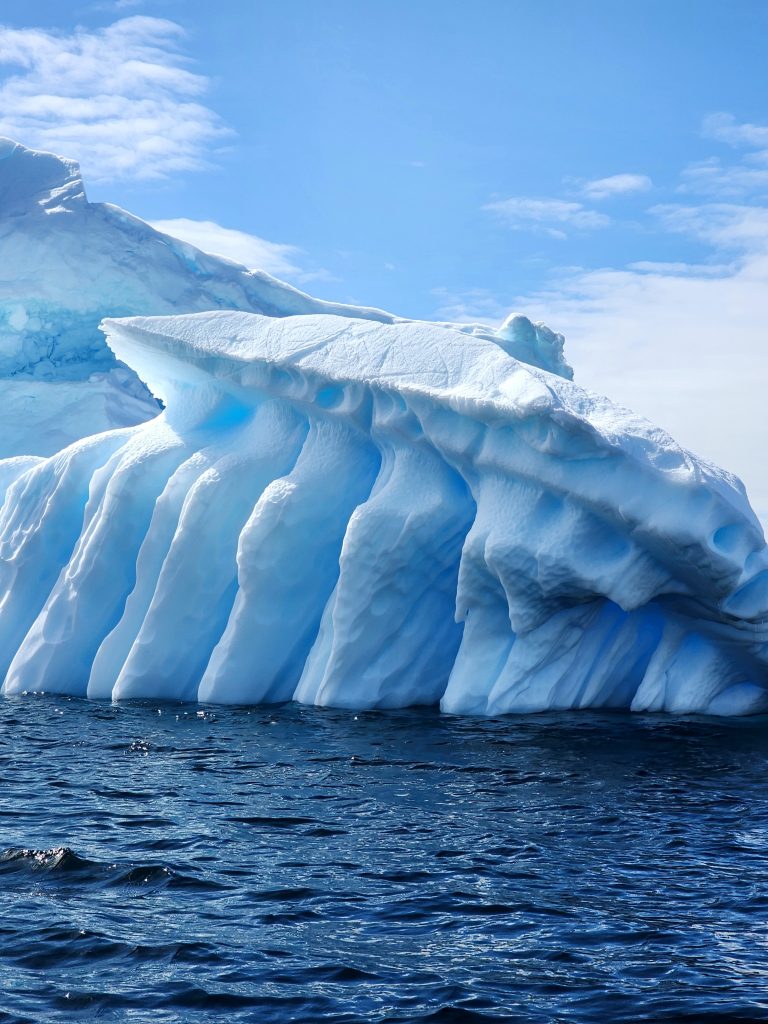

6. Preparing for the Journey
The journey to Antarctica typically involves a flight to Ushuaia, Argentina, followed by a ship cruise across the Drake Passage. Be prepared for rough seas and take seasickness medication if needed. You can buy this in Ushuaia. The anticipation and excitement of reaching the White Continent make the journey all the more thrilling.
Highlights of my Antarctica trip
New Year’s Eve on Antarctica Cruise
Celebrating New Year’s Eve in Antarctica was surreal. With the midnight sun still shining, we toasted to the New Year 2024 with a special crusie party surrounded by the glaciers and icebergs—a truly magical experience. Camping out on land was available for added extra but I decided to enjoy my luxury cabin cruise with fellow solo travellers and wasn’t keen on spending the NYE outside on ice.
Wildlife Encounters
From playful penguins to majestic whales and seals, the wildlife encounters were unforgettable. The sight of penguin colonies and the sound of whale songs were among the trip’s highlights.
Iceberg Hiking
One of the most exhilarating activities was hiking amidst towering icebergs. Paddling through the gigantic icebergs, I felt a profound connection with nature.


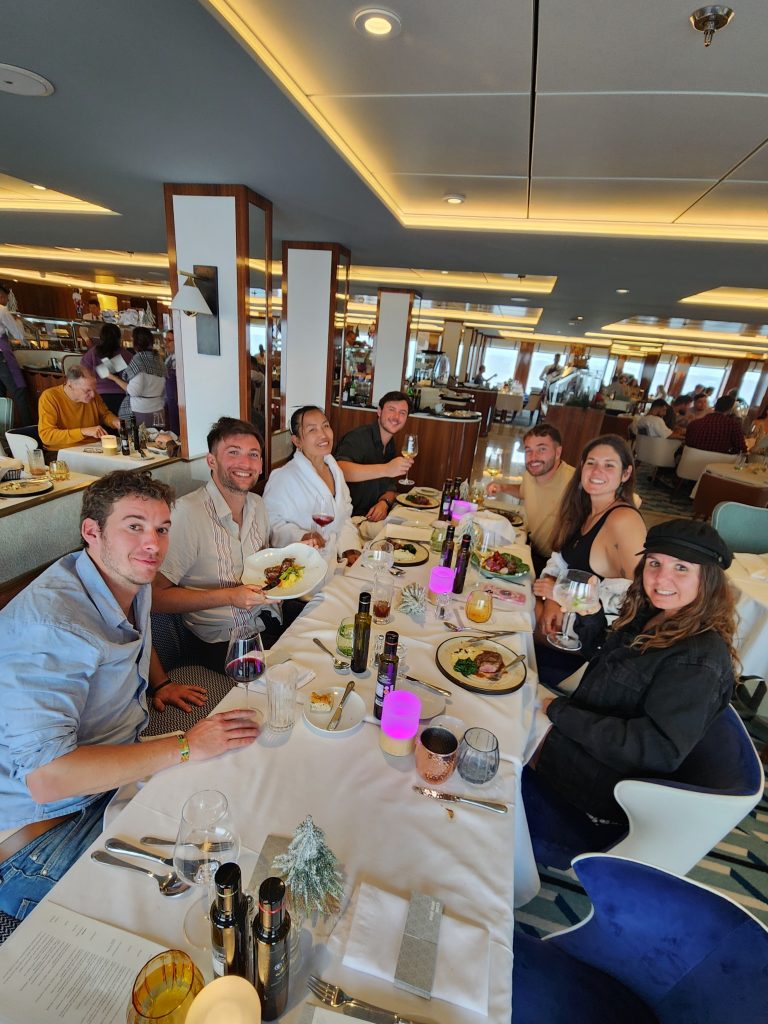


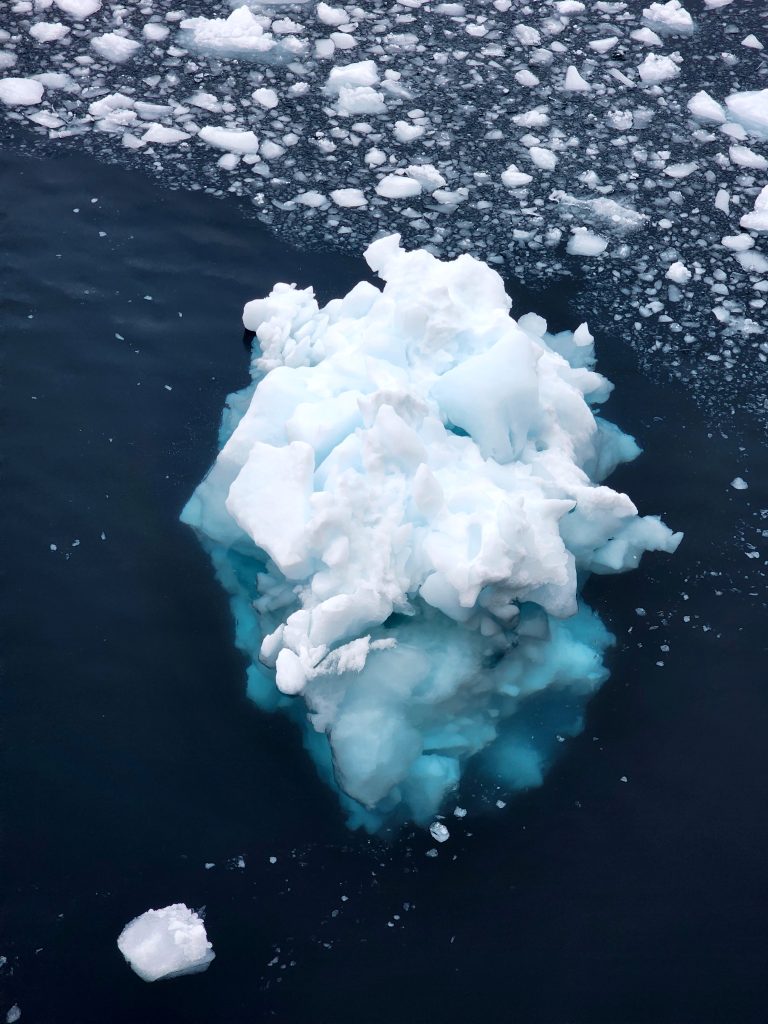



Zodiac Excursions
Zodiac excursions allowed us to explore the coastline up close, offering breathtaking views of glaciers, ice formations, and abundant wildlife.
Polar Plunge
This was one of the most anticipated activity and although a bit hesitant it was one of the memorable afternoon for me.
Complimentary internet:
As a digital nomad, initially I was glad there was up to 2 hours per day complimentary internet available and you could also buy more as add on but i chose to take time off the screen and enjoyed every minute of the trip.
Drake Passage
I will never forget the terrible earthquake like slow motion making my whole suite move left to right and bathroom door closing and opening on its own, meanwhile I was in bed with sea sickness and headache trying to watch free solo! But what made it all better was, knowing I had just ordered some delish room service.
Fine Dinning
And that bring us to food, it was AMAZING every single day! Idk if it was the cold or just my appetite but I can truly say I now have had some of the most delicious fine dinning in Antartica ship. I will share all the pictures and videos on my Instagram.
Meeting People
I didn’t expect to meet about 10 fellow solo travellers on an Antarctica cruise but I am glad we all met and shared some good times together.
Final Thoughts
Visiting Antarctica was a dream come true and an experience that exceeded all expectations. The pristine beauty, the sense of isolation, and the profound connection with nature made it an unforgettable adventure. If you’re considering ticking Antarctica off your bucket list, I highly recommend taking the plunge. It’s a journey that will stay with you forever. Here’s to more adventures and exploring the unknown!
If you would like the contact details of the company I went with, email me at anna (at) annasherchand (dot) com with subject Antarctica
I am on the mission to travel all the 195 countries in the world (not in a race, more like in a slow and steady fashion) and started the 2024 new year in Antarctica completing solo travel to all the 7 continents! It was a big milestone because I worked hard, and saved for these trips. I am beyond grateful to be able to do it and share what I know here on the blog. No one funds me, I do the funding except sometimes when I work with brands. So it would mean a lot if you share/repin this post 🙂
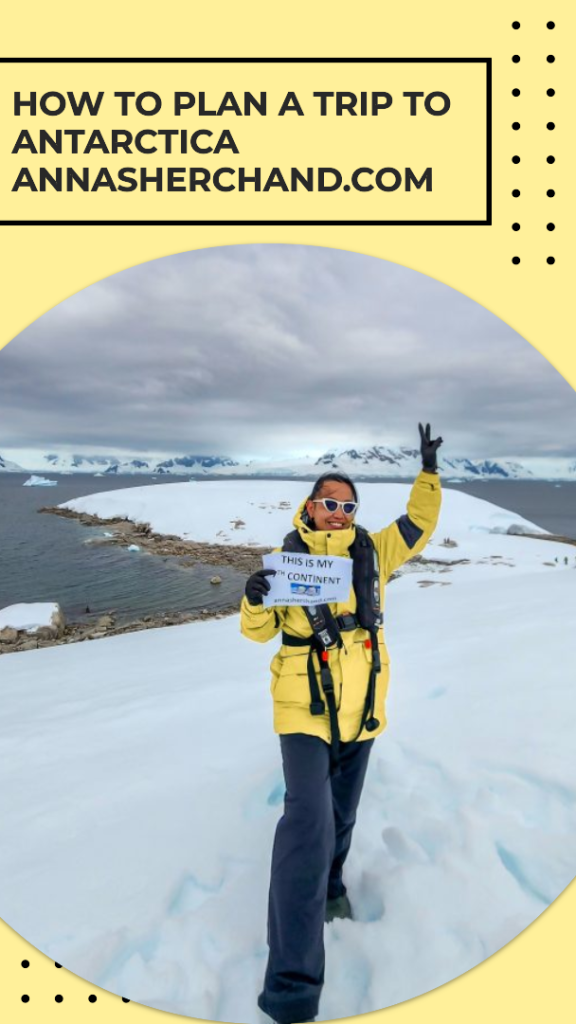


Let me know in the comments:
If you have any more questions about how to plan a trip to Antarctica
How to plan a trip to Argentina
Solo travel to rio de janeiro
San pedro de atacama to uyuni
Backpacking Paraguay itinerary and travel tips
Chile itinerary 3 weeks
Venezuela itinerary and travel tips
Paramaribo itinerary & travel tips
5 days in Uruguay itinerary
Backpacking 1 month in Central America itinerary
1 week in Seoul
3 Days in Kuala Lumpur Itinerary
7 days in Mongolia travel itinerary
Solo trip to Peru One month itinerary
Solo female travel Colombia
7 days backpacking in Ecuador itinerary
Solo female travel to Georgetown Guyana
5 days in Oaxaca itinerary
2 days in Mexico City itinerary
7 Days Itinerary in Georgia
4 Days in Azerbaijan Itinerary
Best places to visit from Split
2 days in Split, Croatia
Solo traveling to Mostar
Solo female travel to Kotor
Solo female travel to Budva
Solo female travel Albania
Warsaw by Train covers warsaw travel tips
Check out One day in Luxembourg, western Europe
Day trip from Zurich to Liechtenstein
Travel tips to South America
Fiji solo travel guide
Australia east coast must-see
Backpacking in Melbourne, Australia
Digital nomad guide to Melbourne
14 best area to stay in Melbourne CBD
Master Sydney travel guide
Solo travel guide to Brisbane
Exploring Adelaide the best way is a must-read
Important travel tips for Uluru trip
Melbourne day trips in winter
Day Hikes in Melbourne
Weekend getaway? Check out things to do in Ballarat
Perth solo itinerary
Top 5 must do in Darwin, Australia
How to go from Dublin to Howth
Solo female travel Romania
Read a recent day trip to Zaanse Schans from Amsterdam
How about a solo itinerary to Canberra– Australia’s capital city?
Solo trip to Peru, travel tips to South America
Check out the 7 days Hanoi travel guide
Book accommodation through trusted Booking.com
I have detailed travel resources right here. Save money, learn what and how.
If you like this article, read about my journey to become Nepali Australian travel blogger , follow my adventures on Instagram, Facebook, YouTube, Twitter, and Pinterest, but most importantly sign up to my e-mail list to keep up with updates and travel posts!
